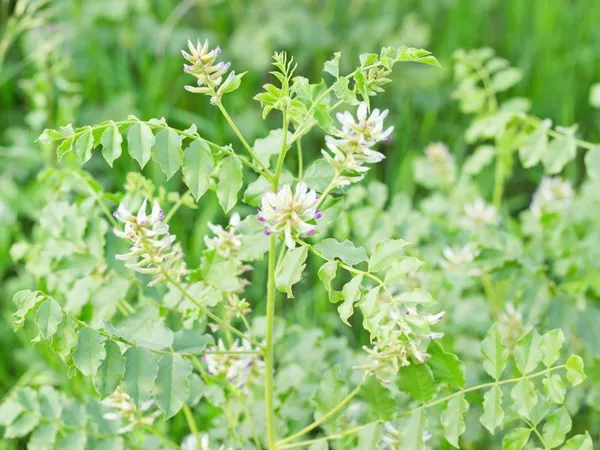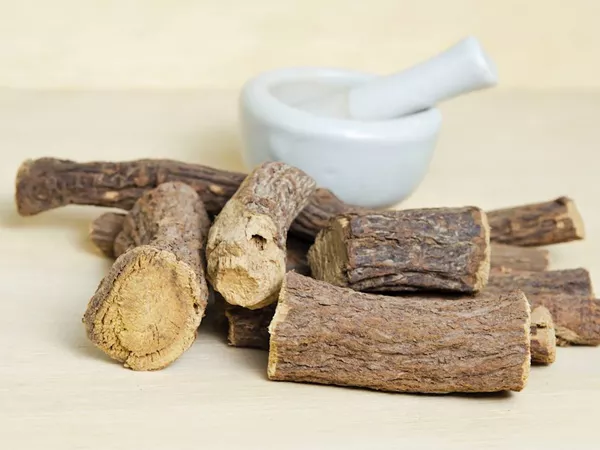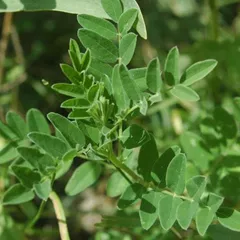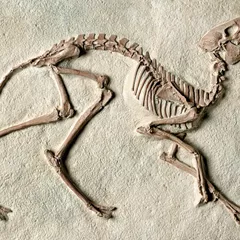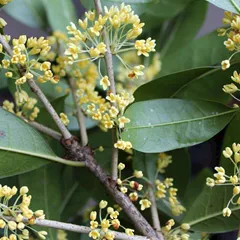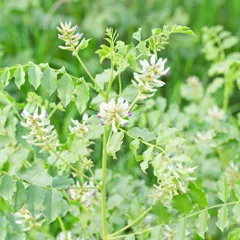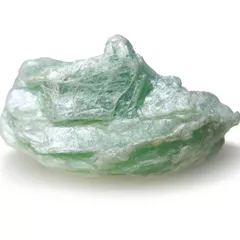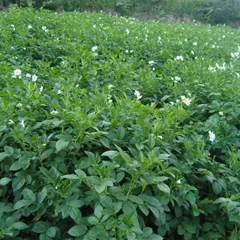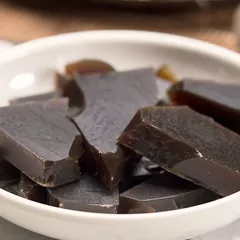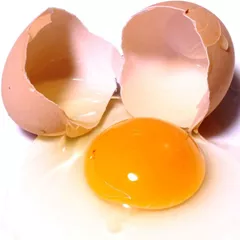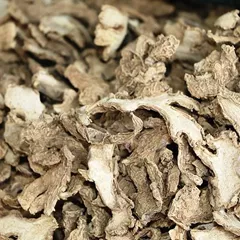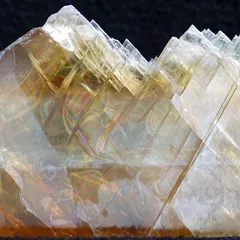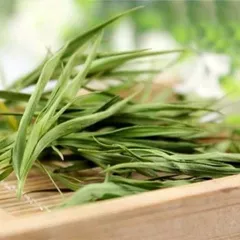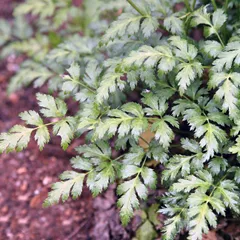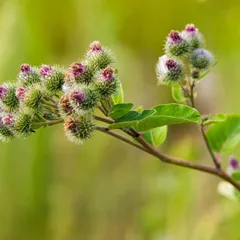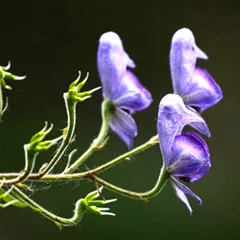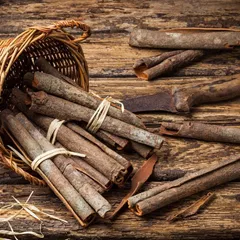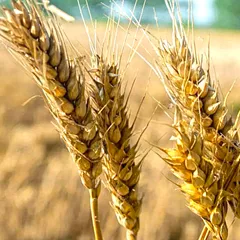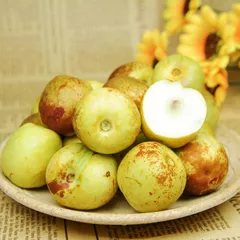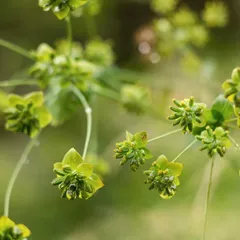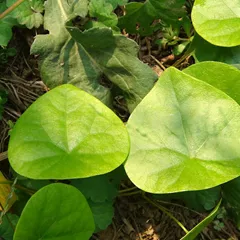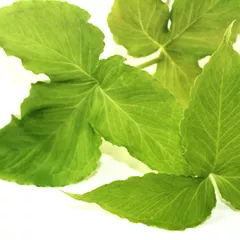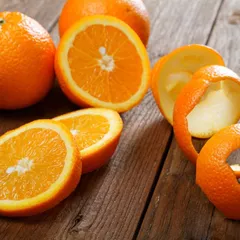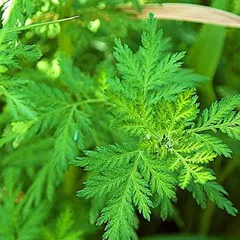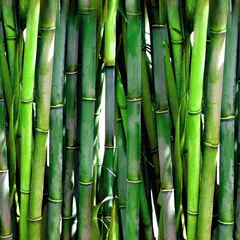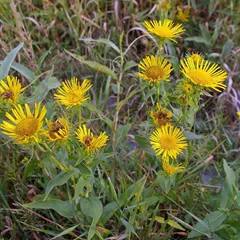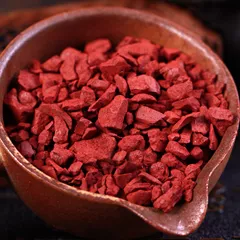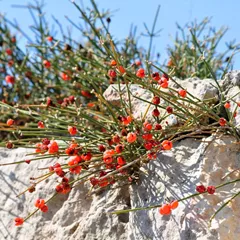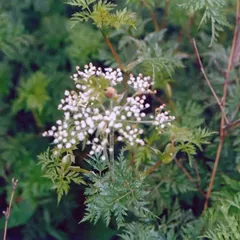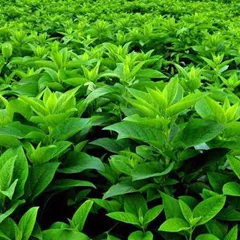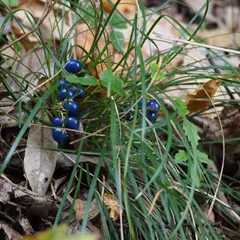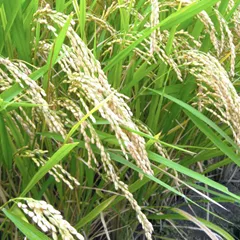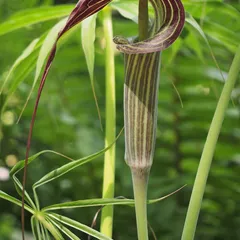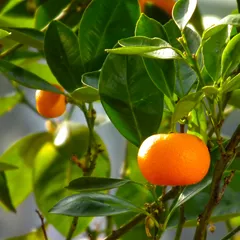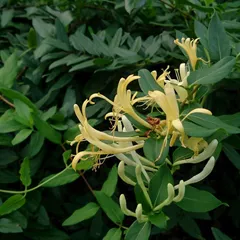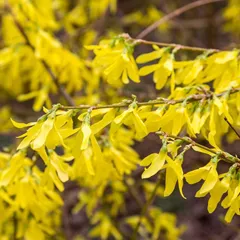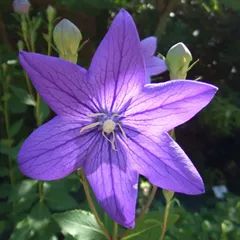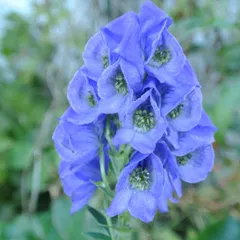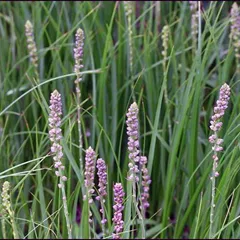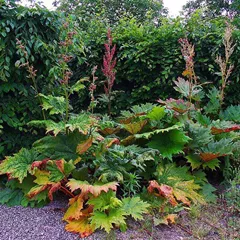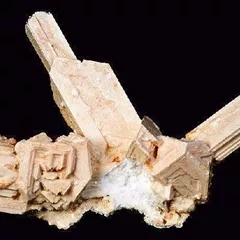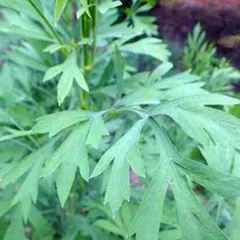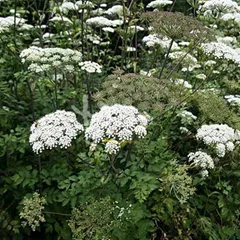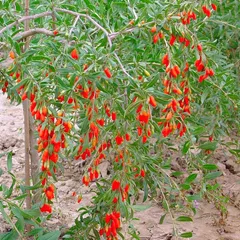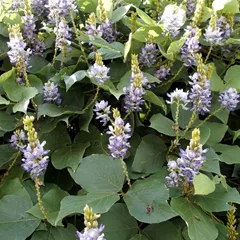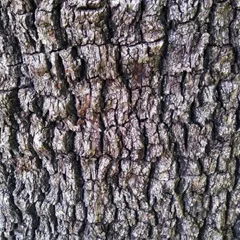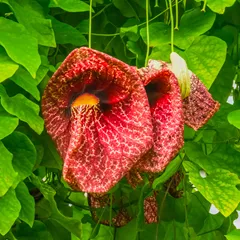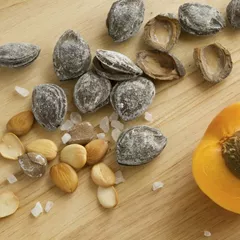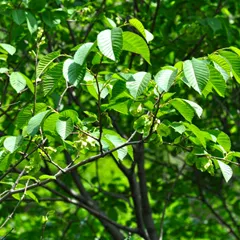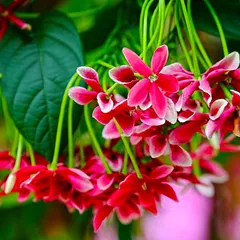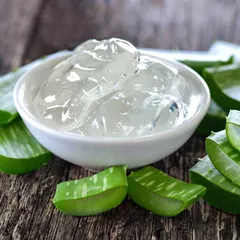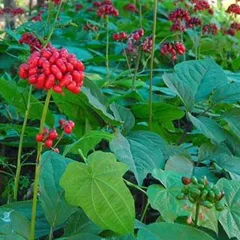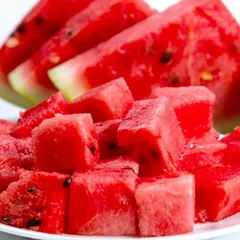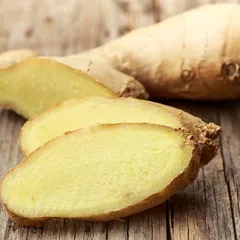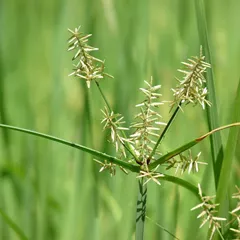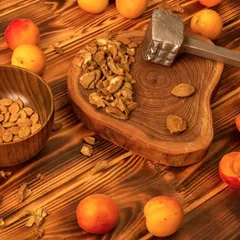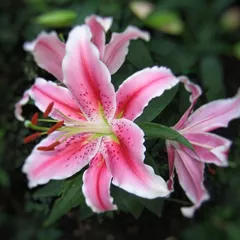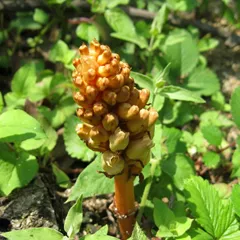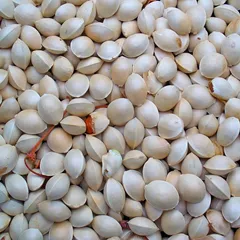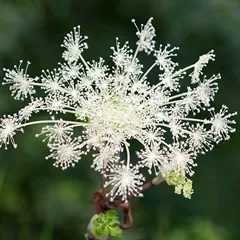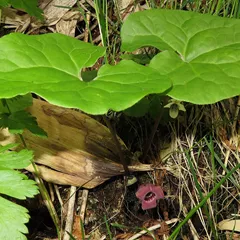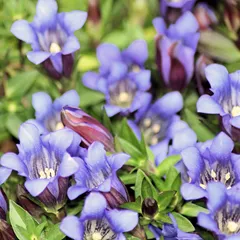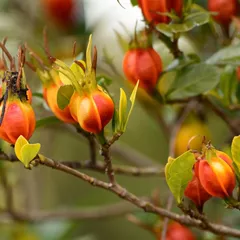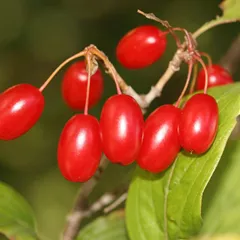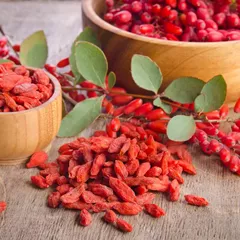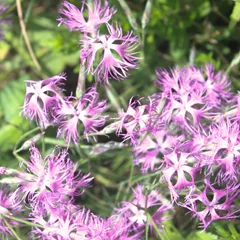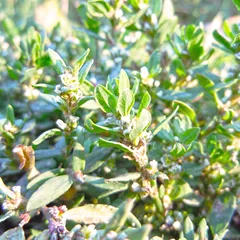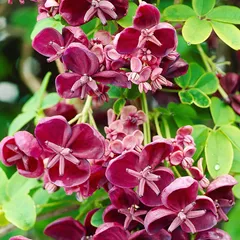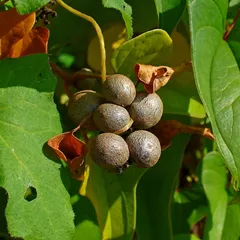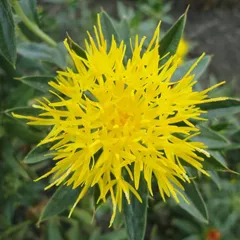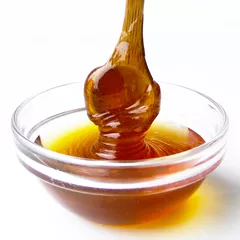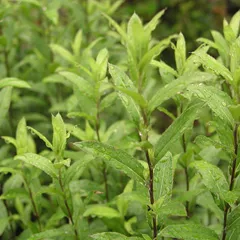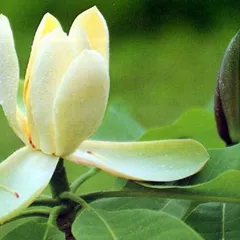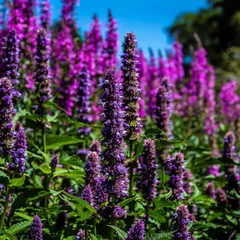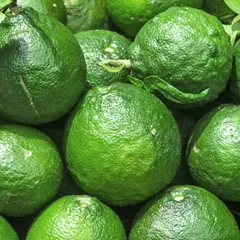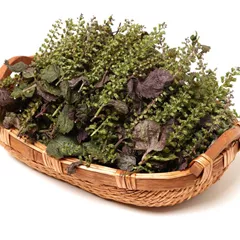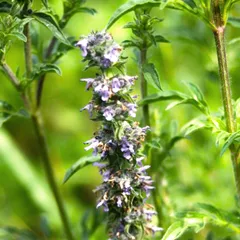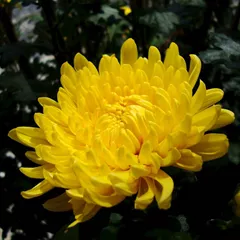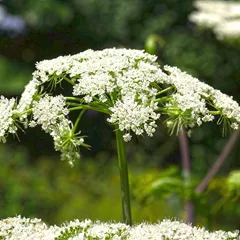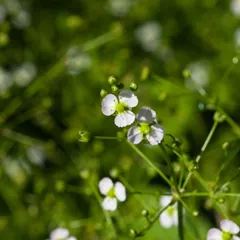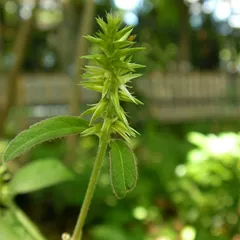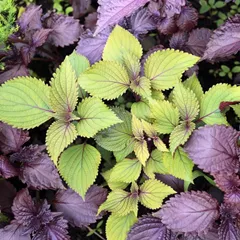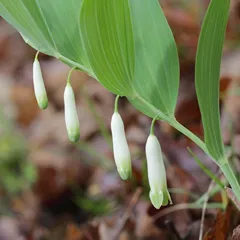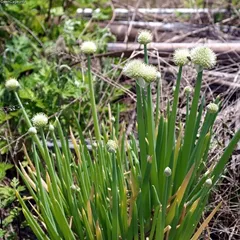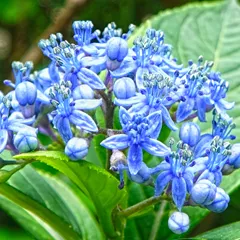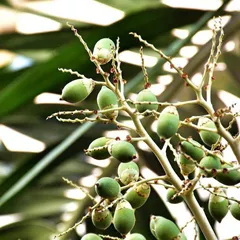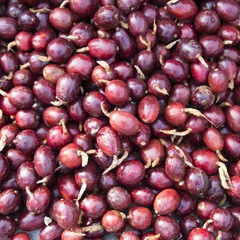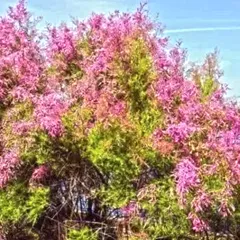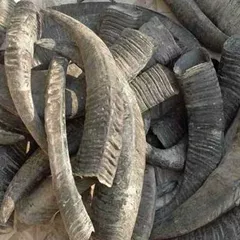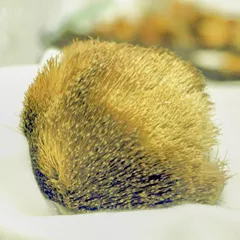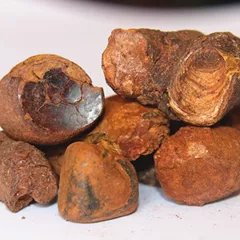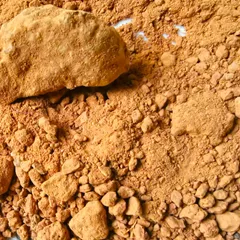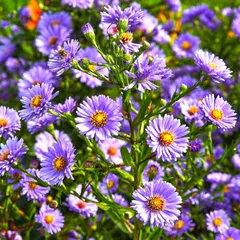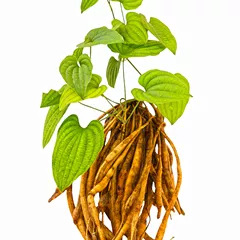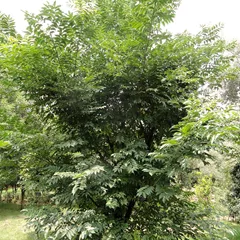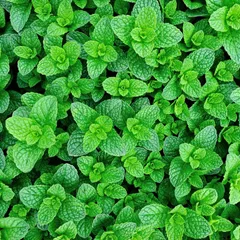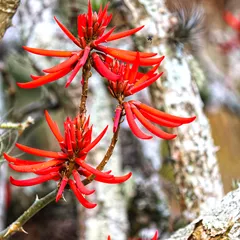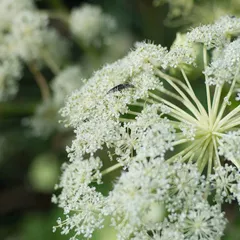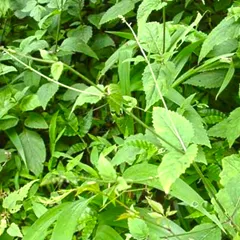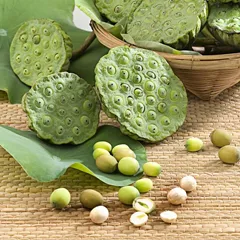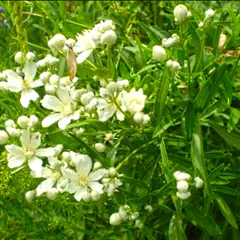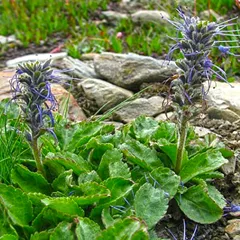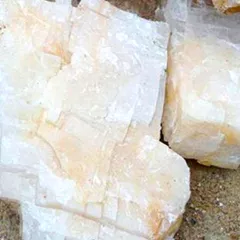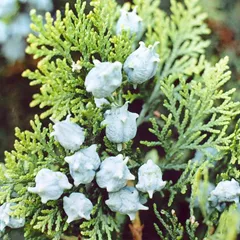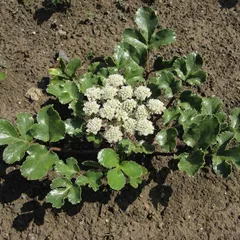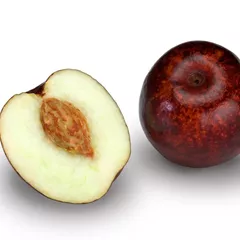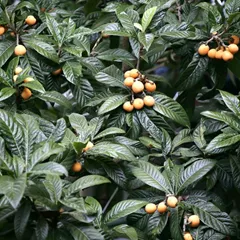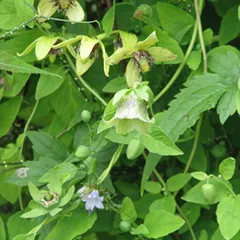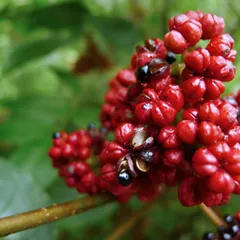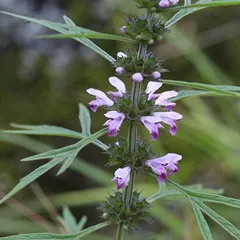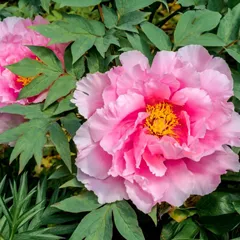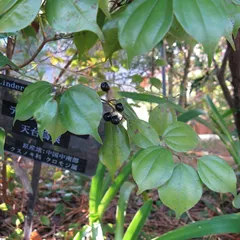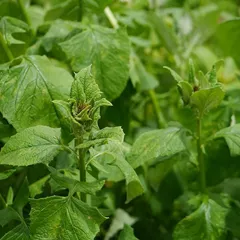Use of Gan Cao (liquorice) in TCM
Please note that you should never self-prescribe TCM ingredients. A TCM ingredient is almost never eaten on its own but as part of a formula containing several ingredients that act together. Please consult a professional TCM practitioner, they will be best able to guide you.
Preparation: Remove impurities, wash, soak in water, cut thick slices, dry.
Dosage: 2 - 10g
Main actions according to TCM*: Tonifies the Basal Qi and nourishes the Spleen Qi. Clears Heat and dispels toxicity. Moistens the Lungsexpel phlegm and stop coughing. Relieves spasms and alleviates pain. Harmonizes and moderates the effects of other herbs.
Primary conditions or symptoms for which Gan Cao may be prescribed by TCM doctors*: Palpitations Coughing Spasmodic pain Abcesses Sore throat Sputum Abdominal pain
Contraindications*: Licorice should not be used when there is Excess Dampness, nausea or vomiting and generally should be used with caution by those who tend to retain water. People with heart conditions or high blood pressure should avoid ingesting large amounts of liquorice as it can increase blood pressure. Prolonged use (6 weeks) of excessive doses (50g/day) can lead to pseudoaldosteronism.
Common TCM formulas in which Gan Cao is used*
Gui Pi Tang
Source date: 1529 AD
Number of ingredients: 12 herbs
Formula key actions: Tonifies and nourish Qi and Blood. Tonifies Heart and Spleen.
Conditions targeted*: Nervous exhaustionMyasthenia gravis and others
Gan Cao is a king ingredient in Gui Pi Tang. Like the name indicates, it means it has more power than other ingredients in the formula.
In Gui Pi Tang, Gan Cao tonifies the Spleen and augments the Qi.
Together with the 3 other key herbs in this formula it has a strong tonifying effect on the Spleen, which enables it to generate Blood.
Shen Ling Bai Zhu San
Source date: 1107 AD
Number of ingredients: 10 herbs
Formula key actions: Augments the Qi. Strengthens the Spleen. Leaches out Dampness. Stops diarrhea.
Conditions targeted*: Chronic gastritisEnteritis and others
Gan Cao is a king ingredient in Shen Ling Bai Zhu San. Like the name indicates, it means it has more power than other ingredients in the formula.
In Shen Ling Bai Zhu San, Gan Cao warms and regulates the Middle Burner
Feng Yin Tang
Source date: 220 AD
Number of ingredients: 12 herbs
Formula key actions: Extinguishes and pacifies Wind with heavy medicinals. Calms the Mind. Clears Heat.
Conditions targeted*: EpilepsyStroke and others
Gan Cao is a king ingredient in Feng Yin Tang. Like the name indicates, it means it has more power than other ingredients in the formula.
In Feng Yin Tang, Gan Cao cools and resolves toxicity, but also harmonizes the many actions of this complex formula.
Zhi Gan Cao Tang
Source date: 220 AD
Number of ingredients: 10 herbs
Formula key actions: Augments the Qi. Nourishes Yin. Nourishes the Blood. Restores the pulse.
Conditions targeted*: Irregular heartbeatsSick sinus syndrome and others
Gan Cao is a king ingredient in Zhi Gan Cao Tang. Like the name indicates, it means it has more power than other ingredients in the formula.
In Zhi Gan Cao Tang, Gan Cao augments the Qi of the Middle Burner.
Liquorice used here is pan fried with honey , thus it is more effective than the raw Liquorice in nourishing the Heart and restoring the heartbeat.
Bu Zhong Yi Qi Tang
Source date: 1247
Number of ingredients: 10 herbs
Formula key actions: Tonifies Qi of the Spleen and Stomach (Middle Burner). Raises the Yang. Detoxifies. Lifts what has sunken.
Conditions targeted*: Chronic hepatitisArrhythmia and others
Gan Cao is a deputy ingredient in Bu Zhong Yi Qi Tang. This means it helps the king ingredient(s) treat the main pattern or it serves to treat a coexisting pattern.
In Bu Zhong Yi Qi Tang, Gan Cao is sweet and warm and tonify the Qi of the Middle Burner.
Bi Yu San
Source date: 1172 AD
Number of ingredients: 3 herbs
Formula key actions: Clears Heat, cools Blood and relieves toxicity. Promotes urination. Eliminates Summer-Heat. Stops convulsions.
Conditions targeted*: Heatstroke and others
Gan Cao is a deputy ingredient in Bi Yu San. This means it helps the king ingredient(s) treat the main pattern or it serves to treat a coexisting pattern.
In Bi Yu San, Gan Cao harmonizes the Middle Burner and has a mild ability to clear Heat and resolve toxicity.
Together with Talc, they not only promotes urination, but also generates Body Fluids, thereby enabling the formula to perform its tasks without injuring the Qi or Body Fluids.
Liu Yi San
Source date: 1172 AD
Number of ingredients: 2 herbs
Formula key actions: Clears Summer-Heat. Drains Dampness. Supplements Qi.
Conditions targeted*: Stomach fluGastroenteritis and others
Gan Cao is a deputy ingredient in Liu Yi San. This means it helps the king ingredient(s) treat the main pattern or it serves to treat a coexisting pattern.
In Liu Yi San, Gan Cao harmonizes the middle and has a mild ability to clear Heat and resolve toxicity. Its combination with Talc (Hua Shi) not only promotes urination, but also generates Fluids, thereby enabling the formula to perform its tasks without injuring the Qi or body Fluids.
Ren Shen Yang Rong Tang
Source date: 1174 AD
Number of ingredients: 14 herbs
Formula key actions: Tonifies Qi and Blood. Nourishes the Heart. Calms the spirit.
Conditions targeted*: AnemiaNonhealing ulcers and others
Gan Cao is a deputy ingredient in Ren Shen Yang Rong Tang. This means it helps the king ingredient(s) treat the main pattern or it serves to treat a coexisting pattern.
In Ren Shen Yang Rong Tang, Gan Cao helps Ginseng tonify the Qi and harmonize all ingredients.
E Jiao Ji Zi Huang Tang
Source date: the Qing dynasty
Number of ingredients: 10 herbs
Formula key actions: Nourishes Yin. Nourishes Blood. Calms the Liver. Extinguishes Wind.
Conditions targeted*: EncephalitisMeningitis and others
Gan Cao is a deputy ingredient in E Jiao Ji Zi Huang Tang. This means it helps the king ingredient(s) treat the main pattern or it serves to treat a coexisting pattern.
In E Jiao Ji Zi Huang Tang, Gan Cao calms the Liver to extinguish Wind. The combination Gan Cao with Bai Shao (White Peony Roots) and is very effective in treating painful spasms.
Ju Yuan Jian
Source date: 1624 AD
Number of ingredients: 5 herbs
Formula key actions: Tonifies Qi and Blood.
Conditions targeted*: Heavy menstruationMetrorrhagia and others
Gan Cao is a deputy ingredient in Ju Yuan Jian. This means it helps the king ingredient(s) treat the main pattern or it serves to treat a coexisting pattern.
In Ju Yuan Jian, Gan Cao is sweet and warm and tonify the Qi of the Middle Burner.
Gan Cao Gan Jiang Tang
Source date: 220 AD
Number of ingredients: 2 herbs
Formula key actions: Warms the Lungs. Strengthens the Stomach.
Conditions targeted*: EnuresisExcessive drooling and others
Gan Cao is a deputy ingredient in Gan Cao Gan Jiang Tang. This means it helps the king ingredient(s) treat the main pattern or it serves to treat a coexisting pattern.
In Gan Cao Gan Jiang Tang, Gan Cao tonifies the Qi. Together with Dried ginger, they warm and strengthen the Stomach, which in turn assist in resolving the Lungs disharmony. According to the the five phases theory, nurturing the earth (Stomach) can generate the metal (Lungs).
The combination of sweet and acrid herbs warms the Yang and augments the Qi in a balanced manner.
Zhu Ye Shi Gao Tang
Source date: 220 AD
Number of ingredients: 7 herbs
Formula key actions: Clears Heat. Generates Body Fluids. Strengthens and regulates Qi.
Conditions targeted*: PneumoniaEncephalitis B and others
Gan Cao is a deputy ingredient in Zhu Ye Shi Gao Tang. This means it helps the king ingredient(s) treat the main pattern or it serves to treat a coexisting pattern.
In Zhu Ye Shi Gao Tang, Gan Cao , together with Rice sprouts, serves two Functions. They assist Ginseng in tonifying the Qi, and they harmonize the Middle Burner and nourish the Stomach, thereby protecting the Stomach against injury from Gypsum.
Pu Ji Xiao Du Yin
Source date: 1202 AD
Number of ingredients: 14 herbs
Formula key actions: Clears Toxic-Heat. Clears Wind-Heat .
Conditions targeted*: FurunclesCarbuncles and others
Gan Cao is a deputy ingredient in Pu Ji Xiao Du Yin. This means it helps the king ingredient(s) treat the main pattern or it serves to treat a coexisting pattern.
In Pu Ji Xiao Du Yin, Gan Cao clear Heat from the throat and relieve the Toxic-Fire there.
Hui Yang Jiu Ji Tang
Source date: 1445 AD
Number of ingredients: 11 herbs
Formula key actions: Restores and revives the Yang. Augments the Qi. Revives the pulse.
Conditions targeted*: Myocardial infarctionCardiogenic shock and others
Gan Cao is a deputy ingredient in Hui Yang Jiu Ji Tang. This means it helps the king ingredient(s) treat the main pattern or it serves to treat a coexisting pattern.
In Hui Yang Jiu Ji Tang, Gan Cao Strengthening the Middle Burner helps to manage the distribution of Yang energy without impeding its replenishment.
It also serves as as envoy that harmonizes the formula and balance the slightly toxic nature of Prepared aconite。
Sheng Yang Yi Wei Tang
Source date: 1247 AD
Number of ingredients: 16 herbs
Formula key actions: Strengthens the Spleen. Augments the Qi. Raises the Yang. Releases Dampness.
Conditions targeted*: Atrophic gastritisChronic pelvic inflammatory disease and others
Gan Cao is a deputy ingredient in Sheng Yang Yi Wei Tang. This means it helps the king ingredient(s) treat the main pattern or it serves to treat a coexisting pattern.
In Sheng Yang Yi Wei Tang, Gan Cao warms and regulates the Middle Burner and moderates the draining property of Poria-cocos mushrooms.
Ren Shen Ge Jie San
Source date: 1047 AD
Number of ingredients: 8 herbs
Formula key actions: Tonifies the Qi. Augments the Kidneys. Stops coughing. Arrests wheezing.
Conditions targeted*: Bronchial asthmaEmphysema and others
Gan Cao is a deputy ingredient in Ren Shen Ge Jie San. This means it helps the king ingredient(s) treat the main pattern or it serves to treat a coexisting pattern.
In Ren Shen Ge Jie San, Gan Cao harmonizes the actions of the other herbs and assists in tonifying the source Qi.
With Poria-cocos mushroom, it focuses on the treatment of Spleen earth. They also treat problems of Lung metal and Kidney water via the generating and controlling relationships of the five phases.
Gan Mai Da Zao Tang
Source date: 220 AD
Number of ingredients: 3 herbs
Formula key actions: Nourishes the Heart. Calms the Mind. Harmonizes the middle burner. Relaxes hypertonicity.
Conditions targeted*: General anxiety disorderHysteria and others
Gan Cao is a deputy ingredient in Gan Mai Da Zao Tang. This means it helps the king ingredient(s) treat the main pattern or it serves to treat a coexisting pattern.
In Gan Mai Da Zao Tang, Gan Cao nourishes the Heart, tonifies the Qi, and harmonizes the Middle Burner. It also clears Heat.
Shao Yao Gan Cao Tang
Source date: 220 AD
Number of ingredients: 2 herbs
Formula key actions: Nourishes the Blood and augments the Yin. Moderates painful spasms. Alleviates pain.
Conditions targeted*: Ligament spasm painTissue spam pain and others
Gan Cao is a deputy ingredient in Shao Yao Gan Cao Tang. This means it helps the king ingredient(s) treat the main pattern or it serves to treat a coexisting pattern.
In Shao Yao Gan Cao Tang, Gan Cao augments the Qi of the Middle Burner, especially that of the Spleen, and moderates urgency.
Together, these two herbs regulate the relationship between the Liver and Spleen and nourish the sinews and Blood, which in turn stops the spasms and pain.
Jia Wei Xiao Yao San
Source date: Ming dynasty
Number of ingredients: 10 herbs
Formula key actions: Clears Liver and Spleen Qi Stagnation. Tonifies Spleen. Clears Deficient Heat. Nourishes the blood.
Conditions targeted*: InfertilityMenorrhagia and others
Gan Cao is an assistant ingredient in Jia Wei Xiao Yao San. This means that it either serves to reinforces the effect of other ingredients or it moderates their toxicity.
In Jia Wei Xiao Yao San, Gan Cao tonifies the Spleen and, when combined with White peony roots (as is the case here), helps reduce the spasms that are often a symptoms for patients that use this formula.
Xiao Yao San
Source date: 1107 AD
Number of ingredients: 6 herbs
Formula key actions: Harmonizes the function of Liver and Spleen. Relieves Liver Qi stagnation. Nourishes the Blood.
Conditions targeted*: HepatitisCholecystitis and others
Gan Cao is an assistant ingredient in Xiao Yao San. This means that it either serves to reinforces the effect of other ingredients or it moderates their toxicity.
In Xiao Yao San, Gan Cao tonifies the Spleen and, when combined with White peony roots (as is the case here), helps reduce the spasms that are often a symptoms for patients that use this formula.
Fang Ji Huang Qi Tang
Source date: 220 AD
Number of ingredients: 6 herbs
Formula key actions: Diuretic, clears Excess fluid and removes edema. Tonifies the Spleen Qi. Calms External Wind.
Conditions targeted*: AscitesEdema and others
Gan Cao is an assistant ingredient in Fang Ji Huang Qi Tang. This means that it either serves to reinforces the effect of other ingredients or it moderates their toxicity.
In Fang Ji Huang Qi Tang, Gan Cao helps tonify the Spleen.
Er Chen Tang
Source date: 1148 AD
Number of ingredients: 5 herbs
Formula key actions: Dries Damp and dispels Phlegm. Regulates Qi and harmonizes the Middle Burner (Stomach and Spleen).
Conditions targeted*: Upper respiratory tract infectionsChronic bronchitis and others
Gan Cao is an assistant ingredient in Er Chen Tang. This means that it either serves to reinforces the effect of other ingredients or it moderates their toxicity.
In Er Chen Tang, Gan Cao tonifies the Spleen.
Hao Qin Qing Dan Tang
Source date: Qing Dynasty
Number of ingredients: 10 herbs
Formula key actions: Clears Heat and relieves acute conditions of the Gallbladder. Relieves acute Damp-Heat syndromes. Resolves Phlegm. Harmonizes the Stomach.
Conditions targeted*: CholecystitisIcteric hepatitis and others
Gan Cao is an assistant ingredient in Hao Qin Qing Dan Tang. This means that it either serves to reinforces the effect of other ingredients or it moderates their toxicity.
In Hao Qin Qing Dan Tang, Gan Cao , together with Talc (Hua Shi), Poria-cocos mushroom (Fu Ling) and Natural Indigo (Qing Dai), the other assistants in this formula, drain Damp Heat through the urine to break Stagnation in the Triple Burner.
Xiao Chai Hu Tang
Source date: 220 AD
Number of ingredients: 7 herbs
Formula key actions: Treats the Lesser Yang Channels (Gallbladder and Triple Warmer). Regulates the Liver and Spleen functions. Addresses combined Yin-Yang symptoms of External and Internal, Excess and Deficiency, and Hot and Cold.
Conditions targeted*: HepatitisChronic cholecystitis and others
Gan Cao is an assistant ingredient in Xiao Chai Hu Tang. This means that it either serves to reinforces the effect of other ingredients or it moderates their toxicity.
Xuan Fu Dai Zhe Tang
Source date: 220 AD
Number of ingredients: 7 herbs
Formula key actions: Regulates the downward flow of Stomach Qi. Expectorant, treats hiccups.
Conditions targeted*: HiccupsChronic gastritis and others
Gan Cao is an assistant ingredient in Xuan Fu Dai Zhe Tang. This means that it either serves to reinforces the effect of other ingredients or it moderates their toxicity.
Da Qing Long Tang
Source date: 220 AD
Number of ingredients: 7 herbs
Formula key actions: Promotes sweating. Releases the Exterior. Clears Interior Heat.
Conditions targeted*: Upper respiratory tract infectionsInfluenza and others
Gan Cao is an assistant ingredient in Da Qing Long Tang. This means that it either serves to reinforces the effect of other ingredients or it moderates their toxicity.
Xiong Gui Er Chen Tang
Source date: 1575 AD
Number of ingredients: 7 herbs
Formula key actions: Resolves Damp-Phlegm. Nourishes Blood.
Gan Cao is an assistant ingredient in Xiong Gui Er Chen Tang. This means that it either serves to reinforces the effect of other ingredients or it moderates their toxicity.
In Xiong Gui Er Chen Tang, Gan Cao tonifies the Spleen
Yang Yin Qing Fei Tang
Source date: the 18th century
Number of ingredients: 8 herbs
Formula key actions: Nourishes the Yin. Improves throat. Resolves toxicity. Clears the Lungs.
Conditions targeted*: DiphtheriaTonsillitis and others
Gan Cao is an assistant ingredient in Yang Yin Qing Fei Tang. This means that it either serves to reinforces the effect of other ingredients or it moderates their toxicity.
In Yang Yin Qing Fei Tang, Gan Cao resolves toxicity, improves the condition of the throat, and harmonizes the actions of the other herbs in the formula.
Ba Zhen Tang
Source date: 1326 AD
Number of ingredients: 10 herbs
Formula key actions: Tonifies and augments Qi. Tonifies and augments Blood.
Conditions targeted*: AnemiaHepatitis and others
Gan Cao is an assistant ingredient in Ba Zhen Tang. This means that it either serves to reinforces the effect of other ingredients or it moderates their toxicity.
In Ba Zhen Tang, Gan Cao supplies Qi and harmonizes the Middle Burner.
Mai Men Dong Tang
Source date: 220 AD
Number of ingredients: 6 herbs
Formula key actions: Nourishes the Stomach. Generates Body Fluids. Directs Rebellious Qi downward.
Conditions targeted*: Lung atrophyLaryngitis and others
Gan Cao is an assistant ingredient in Mai Men Dong Tang. This means that it either serves to reinforces the effect of other ingredients or it moderates their toxicity.
In Mai Men Dong Tang, Gan Cao it has a relatively strong action in tonifying the Stomach. It can also improves the throat issue often encountered by patients who suffer from the patterns solved by this formula.
Di Tan Tang
Source date: 1470 AD
Number of ingredients: 9 herbs
Formula key actions: Removes Phlegm. Opens the sensory orifices. Tonifies Qi.
Conditions targeted*: Cerebrovascular accidentSeizure disorder and others
Gan Cao is an assistant ingredient in Di Tan Tang. This means that it either serves to reinforces the effect of other ingredients or it moderates their toxicity.
In Di Tan Tang, Gan Cao harmonizes the actions of the other ingredients and the functions of the Middle Burner. It also counteracts the toxicity of the key and deputy ingredients as well as promoting Qi dispersion throughout the Triple Burner.
Dang Gui Si Ni Tang
Source date: 220 AD
Number of ingredients: 7 herbs
Formula key actions: Warms the Channels. Disperses Cold. Nourishes the Blood. Unblocks the Blood vessels.
Conditions targeted*: Vascular headacheRaynaud's disease and others
Gan Cao is an assistant ingredient in Dang Gui Si Ni Tang. This means that it either serves to reinforces the effect of other ingredients or it moderates their toxicity.
In Dang Gui Si Ni Tang, Gan Cao supports Qi and strengthens the Spleen. It assists Dong Quai and White peony root in tonifying the Blood. It also helps Cinnamon twigs and Wild ginger in facilitating Qi flow.
Ju Pi Zhu Ru Tang
Source date: Essentials from the Golden Cabinet
Number of ingredients: 6 herbs
Formula key actions: Directs rebellious Qi downward. Stops hiccup. Augments Qi. Clears heat.
Conditions targeted*: Morning sicknessIncomplete pyloric obstruction and others
Gan Cao is an assistant ingredient in Ju Pi Zhu Ru Tang. This means that it either serves to reinforces the effect of other ingredients or it moderates their toxicity.
In Ju Pi Zhu Ru Tang, Gan Cao assists Ren Shen in augmenting the Qi and harmonizes the various actions of the other herbs in the formula
Yin Qiao San
Source date: 1798 AD
Number of ingredients: 10 herbs
Formula key actions: Disperses Wind Heat. Clears Heat. Resolves Toxicity.
Conditions targeted*: Common coldInfluenza and others
Gan Cao is an assistant ingredient in Yin Qiao San. This means that it either serves to reinforces the effect of other ingredients or it moderates their toxicity.
In Yin Qiao San, Gan Cao creates Body Fluids and alleviates thirst. Also, Liquorice and Platycoden together are very strong in treating sore throat.
Wu Tou Tang
Source date: 220 AD
Number of ingredients: 6 herbs
Formula key actions: Warms the channels and remove obstruaction. Disperse Cold and Dampness. Warms the joints. Relieve joints pain.
Conditions targeted*: Joint painJoint stiffness and others
Gan Cao is an assistant ingredient in Wu Tou Tang. This means that it either serves to reinforces the effect of other ingredients or it moderates their toxicity.
In Wu Tou Tang, Gan Cao harmonizes the actions of the other herbs, detoxing and eases pain.
Bai Hu Tang
Source date: 220 AD
Number of ingredients: 4 herbs
Formula key actions: Clears Qi-level Heat. Drains Stomach Fire. Generates fluids. Alleviates thirst.
Conditions targeted*: MeningitisScarlet fever and others
Gan Cao is an assistant ingredient in Bai Hu Tang. This means that it either serves to reinforces the effect of other ingredients or it moderates their toxicity.
In Bai Hu Tang, Gan Cao benefits the Stomach and protect the Fluids. It also helps prevent the extremely Cold properties of the other ingredients from injuring the Middle Burner.
Tiao Wei Cheng Qi Tang
Source date: 220 AD
Number of ingredients: 3 herbs
Formula key actions: Removes Heat and Dryness in the Lower Burner. Removes constipation.
Gan Cao is an assistant ingredient in Tiao Wei Cheng Qi Tang. This means that it either serves to reinforces the effect of other ingredients or it moderates their toxicity.
In Tiao Wei Cheng Qi Tang, Gan Cao helps the other ingredients regulate and harmonize Stomach Qi by removing obstructions.
Si Ni Tang
Source date: 220 AD
Number of ingredients: 3 herbs
Formula key actions: Rescues devastated Yang. Warms the Middle Burner. Stops diarrhea.
Conditions targeted*: Acute cardiac insufficiencyCerebrovascular insufficiency and others
Gan Cao is an assistant ingredient in Si Ni Tang. This means that it either serves to reinforces the effect of other ingredients or it moderates their toxicity.
In Si Ni Tang, Gan Cao augments the Qi, strengthens the Spleen, reduces the toxicity and moderates the drying properties of the other herbs.
Da Fang Feng Tang
Source date: 1107 AD
Number of ingredients: 14 herbs
Formula key actions: Expel Wind Damp. Relieve pain. Tonify the Liver and the Kidneys. Tonify the Blood and Qi.
Conditions targeted*: ArthralgiaCommon cold and others
Gan Cao is an assistant ingredient in Da Fang Feng Tang. This means that it either serves to reinforces the effect of other ingredients or it moderates their toxicity.
In Da Fang Feng Tang, Gan Cao tonifies the Spleen so as to support the generating of the Blood and Qi. It is one of the four ingredients of the formula Si Jun Zi Tang that is commonly used for Qi and Blood tonifying. It also harmonizes the actions of other ingredients.
Qing Re Gu Jing Tang
Source date: 1988
Number of ingredients: 11 herbs
Formula key actions: Clears Empty Heat. Tonifies the Kidney Yin. Stops bleeding. Supplies Body Fluids.
Conditions targeted*: MetrorrhagiaThreatened miscarriage and others
Gan Cao is an assistant ingredient in Qing Re Gu Jing Tang. This means that it either serves to reinforces the effect of other ingredients or it moderates their toxicity.
In Qing Re Gu Jing Tang, Gan Cao harmonizes the actions of all other herbs of the formula.
Sheng Ma Ge Gen Tang
Source date: Craft of Medicines and Patterns for Children
Number of ingredients: 4 herbs
Formula key actions: Releases the muscle layer . Vents rashes.
Conditions targeted*: MeaslesHerpes zoster and others
Gan Cao is an assistant ingredient in Sheng Ma Ge Gen Tang. This means that it either serves to reinforces the effect of other ingredients or it moderates their toxicity.
In Sheng Ma Ge Gen Tang, Gan Cao stregthens the Qi and remove Toxins thus helping the key and deputy berbs clearing Heat and venting the rash. The substitution of untreated Liquorice is common due to its ability to resolve toxicity at a higher extent in comparison that of the honeyfried variety.
Zai Zao San
Source date: 1445 AD
Number of ingredients: 12 herbs
Formula key actions: Tonfies the Yang . Augments the Qi. Induces sweating. Releases the Exterior.
Conditions targeted*: Rheumatic feverCommon cold and others
Gan Cao is an assistant ingredient in Zai Zao San. This means that it either serves to reinforces the effect of other ingredients or it moderates their toxicity.
In Zai Zao San, Gan Cao makes the Sweat-inducing actions of the other ingredients better.
Wen Pi Tang
Source date: 650 AD
Number of ingredients: 5 herbs
Formula key actions: Warms and tonifies the Spleen Yang. Clears Cold Evil.
Conditions targeted*: Ulcerative colitisChronic bacillary dysentery and others
Gan Cao is an assistant ingredient in Wen Pi Tang. This means that it either serves to reinforces the effect of other ingredients or it moderates their toxicity.
In Wen Pi Tang, Gan Cao strengthens the Qi.
It follows the principle that, in order to assist and warm the Spleen Yang, Qi must be augmented.
It also functions as an envoy to harmonize the contradictory functions of the different herbs in the formula, accommodating heating with cooling and tonifying with draining.
Huang Lian Tang
Source date: 220 AD
Number of ingredients: 7 herbs
Formula key actions: Regulates Cold and Heat. Harmonizes the Stomach. Directs Rebellious Qi downward.
Conditions targeted*: GastritisHyperacidic stomach and others
Gan Cao is an assistant ingredient in Huang Lian Tang. This means that it either serves to reinforces the effect of other ingredients or it moderates their toxicity.
In Huang Lian Tang, Gan Cao augments the Qi and strengthen the Spleen, assisting the Middle Burner to maintain its normal functions along with other assistants.
Also serving as the envoy, it has the additional task of harmonizing the opposing flavors and actions unfolded by the various herbs in this formula.
Xie Bai San
Source date: 1119 AD
Number of ingredients: 4 herbs
Formula key actions: Drains Heat from the Lungs . Calms wheezing.
Conditions targeted*: Early stage measlesPneumonia and others
Gan Cao is an assistant ingredient in Xie Bai San. This means that it either serves to reinforces the effect of other ingredients or it moderates their toxicity.
In Xie Bai San, Gan Cao protects the Stomach from the cold properties of the other herbs.
Bu Fei E Jiao Tang
Source date: 1119 AD
Number of ingredients: 6 herbs
Formula key actions: Nourishes the Yin. Controls coughing. Stops bleeding. Tonifies the Lungs.
Conditions targeted*: Chronic bronchitisBronchiectasis and others
Gan Cao is an assistant ingredient in Bu Fei E Jiao Tang. This means that it either serves to reinforces the effect of other ingredients or it moderates their toxicity.
In Bu Fei E Jiao Tang, Gan Cao tonifies the Spleen and benefit the Lungs.
The combination of Glutinous rice and Liquorice cultivates the earth (Spleen) to generate metal (Lungs) in order to tonify the Lungs and prevents
the other herbs from disrupting the digestive process.
Bu Dai Wan
Source date: Late Ming
Number of ingredients: 8 herbs
Formula key actions: Expels roundworms. Reduces nutritional impairment in children . Tonifies the Spleen and Stomach.
Conditions targeted*: AscariasisParasitic infestation and others
Gan Cao is an assistant ingredient in Bu Dai Wan. This means that it either serves to reinforces the effect of other ingredients or it moderates their toxicity.
In Bu Dai Wan, Gan Cao benefit the Spleen and fortify the Qi of the Middle Burner.
Huang Qin Tang
Source date: 220 AD
Number of ingredients: 4 herbs
Formula key actions: Clears Heat. Alleviates dysenteric disorders. Stops pain . Harmonizes the Middle Burner.
Conditions targeted*: Bacillary dysenteryAcute colitis and others
Gan Cao is an assistant ingredient in Huang Qin Tang. This means that it either serves to reinforces the effect of other ingredients or it moderates their toxicity.
In Huang Qin Tang, Gan Cao resolves toxicity and, in conjunction with Jujube dates (Da zao), harmonizes the Middle Burner, augments the Qi, and enriches the Yin.
Both herbs thus serve as assistants and envoys in this formula.
Qing Shu Yi Qi Tang
Source date: 1852 AD
Number of ingredients: 10 herbs
Formula key actions: Clears summerheat. Augments the Qi. Nourishes the Yin. Generates Body Fluids.
Conditions targeted*: HyperthermiaHeat stroke and others
Gan Cao is an assistant ingredient in Qing Shu Yi Qi Tang. This means that it either serves to reinforces the effect of other ingredients or it moderates their toxicity.
In Qing Shu Yi Qi Tang, Gan Cao augment the Qi and nourish the Stomach.
Not only it assists in treating the underlying condition, they also prevent the cloying nature of the Yin-nourishing herbs and the cold nature of the Heat-clearing herbs from upsetting the Stomach.
Bai Zhu Fu Zi Tang
Source date: 220 AD
Number of ingredients: 5 herbs
Formula key actions: Warms the channels. Disperses Cold. Strenghtens the Middle Burner. Promotes the resolution of Dampness .
Conditions targeted*: Degenerative joint diseasePost-stroke debility and others
Gan Cao is an assistant ingredient in Bai Zhu Fu Zi Tang. This means that it either serves to reinforces the effect of other ingredients or it moderates their toxicity.
In Bai Zhu Fu Zi Tang, Gan Cao harmonizes the Nutritive and Protective Qi, assists the Qi transformation
of the Middle Burner, and soothes the diverse actions of the formula into a single whole.
Gui Zhi Ren Shen Tang
Source date: 220 AD
Number of ingredients: 5 herbs
Formula key actions: Releases the Exterior. Warms the Interior. Augments the Qi. Eliminates focal distention .
Conditions targeted*: Peptic ulcersChronic cholecystitis and others
Gan Cao is an assistant ingredient in Gui Zhi Ren Shen Tang. This means that it either serves to reinforces the effect of other ingredients or it moderates their toxicity.
In Gui Zhi Ren Shen Tang, Gan Cao is sweet and balanced. It enters the Spleen to harmonize the entire formula and assist Ginseng and Atractylodes rhizome in strengthening the Spleen .
Guo Qi Yin
Source date: 1602 AD
Number of ingredients: 11 herbs
Formula key actions: Warms the menses. Dispels blood Stagnation. Nourishes the blood .
Conditions targeted*: Irregular menstruationDysmenorrhea and others
Gan Cao is an assistant ingredient in Guo Qi Yin. This means that it either serves to reinforces the effect of other ingredients or it moderates their toxicity.
In Guo Qi Yin, Gan Cao softens the Liver and moderates the pain.
Cold contributes to the Blood Stagnation and intensifies Blood Stagnation by causing the vessels to contract.
Si Jun Zi Tang
Source date: 1107 AD
Number of ingredients: 4 herbs
Formula key actions: Tonifies Qi. Strengthens the Spleen and Stomach.
Conditions targeted*: Chronic gastritisPeptic ulcers and others
Gan Cao is an envoy ingredient in Si Jun Zi Tang. This means that it directs the formula towards certain area of the body and/or harmonizes the actions of other ingredients.
In Si Jun Zi Tang, Gan Cao warms and regulates the Middle Burner and moderates the draining property of Poria-cocos mushrooms.
Liu Jun Zi Tang
Source date: 1107
Number of ingredients: 6 herbs
Formula key actions: Tonifies Qi. Strengthens the Spleen and Stomach. Clears Phlegm and mucus. Promotes appetite.
Conditions targeted*: AnorexiaPeptic ulcers and others
Gan Cao is an envoy ingredient in Liu Jun Zi Tang. This means that it directs the formula towards certain area of the body and/or harmonizes the actions of other ingredients.
In Liu Jun Zi Tang, Gan Cao warms and regulates the Middle Burner and moderates the draining property of Poria-cocos mushrooms.
Chai Hu Shu Gan San
Source date: 1602
Number of ingredients: 7 herbs
Formula key actions: Disperses Stagnant Liver Qi and Blood. Alleviates pain. Harmonizes Blood.
Conditions targeted*: HepatitisChronic gastritis and others
Gan Cao is an envoy ingredient in Chai Hu Shu Gan San. This means that it directs the formula towards certain area of the body and/or harmonizes the actions of other ingredients.
In Chai Hu Shu Gan San, Gan Cao is used as an envoy to harmonize the various actions of the other herbs.
Tao He Cheng Qi Tang
Source date: 220 AD
Number of ingredients: 5 herbs
Formula key actions: Dispels Heat and. Eliminates Blood Stagnation.
Conditions targeted*: LeiomyomaRetained placenta and others
Gan Cao is an envoy ingredient in Tao He Cheng Qi Tang. This means that it directs the formula towards certain area of the body and/or harmonizes the actions of other ingredients.
In Tao He Cheng Qi Tang, Gan Cao protects the Stomach and the Middle Burner by moderating the detrimental effects of the other ingredients in this formula.
Bai He Gu Jin Tang
Source date: 1573 AD
Number of ingredients: 10 herbs
Formula key actions: Nourishes Lung and Kidney Yin. Lubricates the Lung and clears phlegm.
Conditions targeted*: Chronic bronchitisChronic pharyngitis and others
Gan Cao is an envoy ingredient in Bai He Gu Jin Tang. This means that it directs the formula towards certain area of the body and/or harmonizes the actions of other ingredients.
In Bai He Gu Jin Tang, Gan Cao harmonizes the actions of the other herbs and, in combination with Platycodon root (Jie Geng), improves the status of the throat.
Ban Xia Bai Zhu Tian Ma Tang
Source date: 1732 AD
Number of ingredients: 8 herbs
Formula key actions: Dries and dissolves Phlegm. Strengthens the Spleen. Smoothes the Liver and calms Liver Wind (antispasmodic).
Conditions targeted*: Meniere's diseaseHypertension and others
Gan Cao is an envoy ingredient in Ban Xia Bai Zhu Tian Ma Tang. This means that it directs the formula towards certain area of the body and/or harmonizes the actions of other ingredients.
In Ban Xia Bai Zhu Tian Ma Tang, Gan Cao harmonizes the actions of the other herbs and mildly regulates the functions of the Middle-Burner
Ding Chuan Tang
Source date: 1550 AD
Number of ingredients: 9 herbs
Formula key actions: Clears Lung Heat. Expectorant for asthma.
Conditions targeted*: Chronic bronchitisAsthma and others
Gan Cao is an envoy ingredient in Ding Chuan Tang. This means that it directs the formula towards certain area of the body and/or harmonizes the actions of other ingredients.
In Ding Chuan Tang, Gan Cao harmonizes the actions of the other ingredients in the formula.
Gui Zhi Shao Yao Zhi Mu Tang
Source date: 220 AD
Number of ingredients: 9 herbs
Formula key actions: Clears Heat and inflammations. Unblocks the flow of Yang Qi and promotes movement (in areas with painful obstruction). Clears Wind and Damp. Relieves pain.
Conditions targeted*: Rheumatoid arthritisConnective tissue disorders and others
Gan Cao is an envoy ingredient in Gui Zhi Shao Yao Zhi Mu Tang. This means that it directs the formula towards certain area of the body and/or harmonizes the actions of other ingredients.
In Gui Zhi Shao Yao Zhi Mu Tang, Gan Cao harmonizes the actions of the other herbs and regulates the functions of the Middle Burner.
Juan Bi Tang
Source date: 1178 AD
Number of ingredients: 9 herbs
Formula key actions: Tonifies and harmonizes the Protective and Nutritive Qi. Dispels Wind. Eliminates Dampness.
Conditions targeted*: Periarthritis of the shoulderRheumatoid arthritis and others
Gan Cao is an envoy ingredient in Juan Bi Tang. This means that it directs the formula towards certain area of the body and/or harmonizes the actions of other ingredients.
In Juan Bi Tang, Gan Cao harmonizes the functions of the other herbs.
Du Huo Ji Sheng Tang
Source date: 650 AD
Number of ingredients: 15 herbs
Formula key actions: Anti-rheumatic, clears Wind, Cold and Damp Stagnation. Strengthens the function of the Liver and Kidney. Tonifies Qi and Blood.
Conditions targeted*: Chronic lower back painSciatica and others
Gan Cao is an envoy ingredient in Du Huo Ji Sheng Tang. This means that it directs the formula towards certain area of the body and/or harmonizes the actions of other ingredients.
In Du Huo Ji Sheng Tang, Gan Cao tonifies the middle Qi and harmonizes the actions of the other herbs in the formula.
Ling Gan Wu Wei Jiang Xin Tang
Source date: 220 AD
Number of ingredients: 5 herbs
Formula key actions: Warms the Lungs. Transforms congested Fluids.
Conditions targeted*: Chronic bronchitisChronic asthma and others
Gan Cao is an envoy ingredient in Ling Gan Wu Wei Jiang Xin Tang. This means that it directs the formula towards certain area of the body and/or harmonizes the actions of other ingredients.
In Ling Gan Wu Wei Jiang Xin Tang, Gan Cao harmonizes the Middle Burner and the actions of the other herbs in the formula.
Ban Xia Xie Xin Tang
Source date: 220 AD
Number of ingredients: 7 herbs
Formula key actions: Reverses the flow of Rebellious Stomach Qi. Relieves both Heat and Cold Stagnation in the gastrointestinal tract.
Conditions targeted*: Peptic ulcersGastroesophageal reflux disease and others
Gan Cao is an envoy ingredient in Ban Xia Xie Xin Tang. This means that it directs the formula towards certain area of the body and/or harmonizes the actions of other ingredients.
In Ban Xia Xie Xin Tang, Gan Cao helps the assistant herbs tonify the middle Qi and harmonizes the actions of the other ingredients.
Xiao Qing Long Tang
Source date: 220 AD
Number of ingredients: 8 herbs
Formula key actions: Releases the Exterior. Transforms Phlegm-Fluids. Warms the Lungs. Directs Rebellious Qi downward.
Conditions targeted*: Upper respiratory tract infectionsBronchitis and others
Gan Cao is an envoy ingredient in Xiao Qing Long Tang. This means that it directs the formula towards certain area of the body and/or harmonizes the actions of other ingredients.
In Xiao Qing Long Tang, Gan Cao augments the Qi and harmonizes the interaction of the other herbs.
Long Dan Xie Gan Tang
Source date: 1682 AD
Number of ingredients: 10 herbs
Formula key actions: Clears Heat and Fire from the Liver and Gallbladder. Clears and drains Damp-Heat from the Lower Burner.
Conditions targeted*: FurunclesPurulent otitis and others
Gan Cao is an envoy ingredient in Long Dan Xie Gan Tang. This means that it directs the formula towards certain area of the body and/or harmonizes the actions of other ingredients.
In Long Dan Xie Gan Tang, Gan Cao harmonizes the Middle Burner and regulate the actions of the other herbs in the formula.
Zuo Gui Yin
Source date: 1624 AD
Number of ingredients: 6 herbs
Formula key actions: Nourishes the Yin. Tonifies the Kidneys.
Gan Cao is an envoy ingredient in Zuo Gui Yin. This means that it directs the formula towards certain area of the body and/or harmonizes the actions of other ingredients.
In Zuo Gui Yin, Gan Cao harmonizes all ingredients.
Ba Zheng San
Source date: 1107 AD
Number of ingredients: 9 herbs
Formula key actions: Clears Heat and Fire. Promotes urination. Unblocks painful urinary dribbling.
Conditions targeted*: GlomerulonephritisCystitis and others
Gan Cao is an envoy ingredient in Ba Zheng San. This means that it directs the formula towards certain area of the body and/or harmonizes the actions of other ingredients.
In Ba Zheng San, Gan Cao harmonizes the actions of all ingredients and relieves the abdominal pain. The combination of Liquorice and talc also assist to ease irritability.
Wan Dai Tang
Source date: 1826 AD
Number of ingredients: 10 herbs
Formula key actions: Tonifies the Middle Burner. Removes Dampness. Stops vaginal discharge. Strengthens the Spleen.
Conditions targeted*: PreeclampsiaOtitis media and others
Gan Cao is an envoy ingredient in Wan Dai Tang. This means that it directs the formula towards certain area of the body and/or harmonizes the actions of other ingredients.
In Wan Dai Tang, Gan Cao assists the chief herbs in tonifying the Middle Burner and harmonizes the actions of the other ingredients.
Ling Gui Zhu Gan Tang
Source date: 220 AD
Number of ingredients: 4 herbs
Formula key actions: Warms and transforms Phlegm-Fluids. Strengthens the Spleen. Resolves Dampness.
Conditions targeted*: Meniere's diseaseBasilar insufficiency and others
Gan Cao is an envoy ingredient in Ling Gui Zhu Gan Tang. This means that it directs the formula towards certain area of the body and/or harmonizes the actions of other ingredients.
In Ling Gui Zhu Gan Tang, Gan Cao strengthen the Qi of the Middle Burner. It has a slight
tendency to cause Stagnation, but it can be effectively counteracted by Fu Ling (Poria-cocos mushroom).
Gui Zhi (Cinnamon twigs), when combined with Gan Cao, transforms its sweetness into Yang through its own acrid and moving nature.
Xue Fu Zhu Yu Tang
Source date: 1830 AD
Number of ingredients: 11 herbs
Formula key actions: Invigorates the Blood. Dispels blood Stagnation. Spreads the Liver Qi. Unblocks the channels.
Conditions targeted*: Coronary artery diseaseRheumatic valvular heart disease and others
Gan Cao is an envoy ingredient in Xue Fu Zhu Yu Tang. This means that it directs the formula towards certain area of the body and/or harmonizes the actions of other ingredients.
In Xue Fu Zhu Yu Tang, Gan Cao regulates and harmonizes all ingredients.
Gui Zhi Jia Long Gu Mu Li Tang
Source date: 220 AD
Number of ingredients: 7 herbs
Formula key actions: Rectifies relationship between Yin and Yang. Harmonizes Heart and Kidney. Stabilizes and secures Essence.
Conditions targeted*: EnuresisUrinary incontinence and others
Gan Cao is an envoy ingredient in Gui Zhi Jia Long Gu Mu Li Tang. This means that it directs the formula towards certain area of the body and/or harmonizes the actions of other ingredients.
Xiao Jian Zhong Tang
Source date: 220 AD
Number of ingredients: 6 herbs
Formula key actions: Warms and tonifies the Middle Burner (Spleen and Stomach). Tonifies Qi. Relieves spasmodic pain.
Conditions targeted*: Chronic gastritisPeptic ulcers and others
Gan Cao is an envoy ingredient in Xiao Jian Zhong Tang. This means that it directs the formula towards certain area of the body and/or harmonizes the actions of other ingredients.
In Xiao Jian Zhong Tang, Gan Cao works with the deputy herbs to stop spasmodic abdominal pain. It also harmonizes the functions of the Middle Burner and of the formula in general.
Ping Wei San
Source date: 1051 AD
Number of ingredients: 4 herbs
Formula key actions: Dries Dampness. Improves the Spleen's transportive function. Promotes the movement of Qi. Harmonizes the Stomach.
Conditions targeted*: Peptic ulcersChronic gastritis and others
Gan Cao is an envoy ingredient in Ping Wei San. This means that it directs the formula towards certain area of the body and/or harmonizes the actions of other ingredients.
In Ping Wei San, Gan Cao tonifies the Spleen and enhances their Spleen-strengthening properties of the formula's other ingredients.
Huo Xiang Zheng Qi San
Source date: 1107 AD
Number of ingredients: 11 herbs
Formula key actions: Releases the Exterior. Transforms Dampness. Regulates Qi. Harmonizes the Middle Burner.
Conditions targeted*: GastroenteritisStomach flu and others
Gan Cao is an envoy ingredient in Huo Xiang Zheng Qi San. This means that it directs the formula towards certain area of the body and/or harmonizes the actions of other ingredients.
In Huo Xiang Zheng Qi San, Gan Cao harmonizes the actions of the other herbs and regulate the Spleen and Stomach.
Si Ni San
Source date: 220 AD
Number of ingredients: 4 herbs
Formula key actions: Regulates Liver and Spleen. Eliminates Internal Heat.
Conditions targeted*: CholecystitisCholelithiasis and others
Gan Cao is an envoy ingredient in Si Ni San. This means that it directs the formula towards certain area of the body and/or harmonizes the actions of other ingredients.
In Si Ni San, Gan Cao harmonizes the various actions of the other herbs in the formula and strengthens the Spleen to curb the Liver.
Ling Jiao Gou Teng Tang
Source date: Qing dynasty
Number of ingredients: 10 herbs
Formula key actions: Cools the Liver. Extinguishes Wind. Increases Fluids. Relaxes the sinews.
Conditions targeted*: EncephalitisMeningitis and others
Gan Cao is an envoy ingredient in Ling Jiao Gou Teng Tang. This means that it directs the formula towards certain area of the body and/or harmonizes the actions of other ingredients.
In Ling Jiao Gou Teng Tang, Gan Cao regulates and harmonizes the actions of the other ingredients.
Su Zi Jiang Qi Tang
Source date: 650 AD
Number of ingredients: 8 herbs
Formula key actions: Directs rebellious Qi downward. Arrests wheezing. Stops coughing. Warms and transforms Phlegm-Cold.
Conditions targeted*: Chronic bronchitisEmphysema and others
Gan Cao is an envoy ingredient in Su Zi Jiang Qi Tang. This means that it directs the formula towards certain area of the body and/or harmonizes the actions of other ingredients.
In Su Zi Jiang Qi Tang, Gan Cao harmonizes the Middle Burner (which helps resolve the Phlegm) as well as the actions of the other ingredients.
Ma Huang Tang
Source date: 220 AD
Number of ingredients: 4 herbs
Formula key actions: Releases exterior cold. Treats wheezing.
Conditions targeted*: InfluenzaRheumatic fever and others
Gan Cao is an envoy ingredient in Ma Huang Tang. This means that it directs the formula towards certain area of the body and/or harmonizes the actions of other ingredients.
In Ma Huang Tang, Gan Cao balances the actions of the other herbs by harmonizing the diaphoretic effect of Ephedrae, and counterbalancing the slight toxicity of Apricot seed.
Li Zhong Wan
Source date: 220 AD
Number of ingredients: 4 herbs
Formula key actions: Warms the Middle Burner. Strengthens the Spleen and Stomach.
Conditions targeted*: GastroenteritisPeptic ulcers and others
Gan Cao is an envoy ingredient in Li Zhong Wan. This means that it directs the formula towards certain area of the body and/or harmonizes the actions of other ingredients.
In Li Zhong Wan, Gan Cao augments the Qi of the Middle Burner and harmonizes the actions of the other herbs in the formula.
Ma Xing Shi Gan Tang
Source date: 220 AD
Number of ingredients: 4 herbs
Formula key actions: Invigorates Lung Qi. Clears Heat. Calms wheezing by directing rebellious Qi downward.
Gan Cao is an envoy ingredient in Ma Xing Shi Gan Tang. This means that it directs the formula towards certain area of the body and/or harmonizes the actions of other ingredients.
In Ma Xing Shi Gan Tang, Gan Cao harmonizes the actions of the other ingredients. It also moistens the Lungs and stops coughing.
Dao Chi San
Source date: 1119 AD
Number of ingredients: 4 herbs
Formula key actions: Clears the Heart. Promotes urination.
Conditions targeted*: StomatitisOral thrush and others
Gan Cao is an envoy ingredient in Dao Chi San. This means that it directs the formula towards certain area of the body and/or harmonizes the actions of other ingredients.
In Dao Chi San, Gan Cao treats painful urinary dribbling, in addition to resolving toxicity and harmonizing the actions of the other herbs in the formula.
Ge Gen Tang
Source date: 220 AD
Number of ingredients: 7 herbs
Formula key actions: Releases the Exterior and muscle layer. Forms Body Fluids.
Conditions targeted*: Common coldCervical spine disease and others
Gan Cao is an envoy ingredient in Ge Gen Tang. This means that it directs the formula towards certain area of the body and/or harmonizes the actions of other ingredients.
In Ge Gen Tang, Gan Cao harmonizes the actions of the other herbs. Together with White peony root, it treats neck and back stiffness by relieving muscle spasms.
Wu Lin San
Source date: 1107 AD
Number of ingredients: 5 herbs
Formula key actions: Clears heat. Cools the Blood. Promotes urination. Unblocks painful urinary dribbling.
Conditions targeted*: UrethritisCystitis and others
Gan Cao is an envoy ingredient in Wu Lin San. This means that it directs the formula towards certain area of the body and/or harmonizes the actions of other ingredients.
In Wu Lin San, Gan Cao drains Fire, resolves toxicity, and harmonizes the actions of the other ingredients.
Ge Geng Huang Qin Huang Lian Tang
Source date: 220 AD
Number of ingredients: 4 herbs
Formula key actions: Releases the Exterior. Drains Heat.
Conditions targeted*: Stomach fluAcute enteritis and others
Gan Cao is an envoy ingredient in Ge Geng Huang Qin Huang Lian Tang. This means that it directs the formula towards certain area of the body and/or harmonizes the actions of other ingredients.
In Ge Geng Huang Qin Huang Lian Tang, Gan Cao harmonizes the actions of the other herbs and protects the Middle Burner from further injury.
Ren Shen Bai Du San
Source date: 1119 AD
Number of ingredients: 12 herbs
Formula key actions: Releases the Exterior. Dispels Wind and Dampness. Augments Qi.
Conditions targeted*: Common coldInfluenza and others
Gan Cao is an envoy ingredient in Ren Shen Bai Du San. This means that it directs the formula towards certain area of the body and/or harmonizes the actions of other ingredients.
In Ren Shen Bai Du San, Gan Cao harmonizes the actions of the other ingredients and assisting Ginseng in tonifying general Qi.
Jing Fang Bai Du San
Source date: 1550 AD
Number of ingredients: 13 herbs
Formula key actions: Releases the Exterior. Dispels Wind and Dampness. Augments Qi.
Conditions targeted*: Common coldInfluenza and others
Gan Cao is an envoy ingredient in Jing Fang Bai Du San. This means that it directs the formula towards certain area of the body and/or harmonizes the actions of other ingredients.
In Jing Fang Bai Du San, Gan Cao harmonizes the actions of the other ingredients and assisting Ginseng in tonifying general Qi.
Sang Ju Yin
Source date: 1798 AD
Number of ingredients: 8 herbs
Formula key actions: Disperses Wind. Stops coughing by invigorating Lung Qi. Clears Heat.
Conditions targeted*: Common coldInfluenza and others
Gan Cao is an envoy ingredient in Sang Ju Yin. This means that it directs the formula towards certain area of the body and/or harmonizes the actions of other ingredients.
In Sang Ju Yin, Gan Cao helps clear the Heat and harmonizes the actions of the other herbs.
Qiang Huo Sheng Shi Tang
Source date: 1247 AD
Number of ingredients: 7 herbs
Formula key actions: Expels wind and dampness.
Conditions targeted*: Rheumatic feverUpper respiratory tract infections and others
Gan Cao is an envoy ingredient in Qiang Huo Sheng Shi Tang. This means that it directs the formula towards certain area of the body and/or harmonizes the actions of other ingredients.
In Qiang Huo Sheng Shi Tang, Gan Cao harmonizes the actions of the other herbs of the formula.
Gui Zhi Tang
Source date: 220 AD
Number of ingredients: 5 herbs
Formula key actions: Releases pathogens from the muscle layer. Regulates the Nutritive and Protective Qi.
Conditions targeted*: Common coldInfluenza and others
Gan Cao is an envoy ingredient in Gui Zhi Tang. This means that it directs the formula towards certain area of the body and/or harmonizes the actions of other ingredients.
In Gui Zhi Tang, Gan Cao harmonizes the actions of the other ingredients.
Shu Jing Huo Xue Tang
Source date: 1587 AD
Number of ingredients: 16 herbs
Formula key actions: Expels Wind Damp from the Channels. Invigorates Blood. Unblocks the channels.
Conditions targeted*: ArthralgiaBell's palsy and others
Gan Cao is an envoy ingredient in Shu Jing Huo Xue Tang. This means that it directs the formula towards certain area of the body and/or harmonizes the actions of other ingredients.
In Shu Jing Huo Xue Tang, Gan Cao harmonizes the actions of all other herbs.
Wei Ling Tang
Source date: 1481 AD
Number of ingredients: 9 herbs
Formula key actions: Promotes urination. Warms the Yang. Strengthens the Spleen. Drains Dampness. Promotes the movement of Qi. Harmonizes the Stomach.
Conditions targeted*: EdemaGastritis and others
Gan Cao is an envoy ingredient in Wei Ling Tang. This means that it directs the formula towards certain area of the body and/or harmonizes the actions of other ingredients.
In Wei Ling Tang, Gan Cao tonifies the Spleen and enhances their Spleen-strengthening properties of the formula's other ingredients.
Qing Zao Jiu Fei Tang
Source date: 1658 AD
Number of ingredients: 9 herbs
Formula key actions: Clears dryness. Moistens the Lungs.
Conditions targeted*: InfluenzaAcute bronchitis and others
Gan Cao is an envoy ingredient in Qing Zao Jiu Fei Tang. This means that it directs the formula towards certain area of the body and/or harmonizes the actions of other ingredients.
In Qing Zao Jiu Fei Tang, Gan Cao harmonizes the actions of the other herbs in the formula. It also tonifies Qi and harmonizes the Middle Burner. It supports the 'mother' (Spleen) in order to benefit the 'child' (Lungs).
Shen Tong Zhu Yu Tang
Source date: 1830
Number of ingredients: 12 herbs
Formula key actions: Invigorates Blood. Unblocks painful obstruction. Relieves pain. Invigorate Qi. Dispels Blood Stagnation. Unblock Channels.
Conditions targeted*: Muscle crampsArthralgia and others
Gan Cao is an envoy ingredient in Shen Tong Zhu Yu Tang. This means that it directs the formula towards certain area of the body and/or harmonizes the actions of other ingredients.
In Shen Tong Zhu Yu Tang, Gan Cao regulates and harmonizes all ingredients.
Zhen Gan Xi Feng Tang
Source date: 1918 AD
Number of ingredients: 12 herbs
Formula key actions: Sedates the Liver. Axtinguishes Wind. Nourishes the Yin. Anchors the yang.
Conditions targeted*: HypertensionRenal hypertension and others
Gan Cao is an envoy ingredient in Zhen Gan Xi Feng Tang. This means that it directs the formula towards certain area of the body and/or harmonizes the actions of other ingredients.
In Zhen Gan Xi Feng Tang, Gan Cao regulates and harmonizes the actions of the other ingredients.
Huang Qi Jian Zhong Tang
Source date: 220 AD
Number of ingredients: 7 herbs
Formula key actions: Warms and tonifies the Middle Burner (Spleen and Stomach). Tonifies Qi. Relieves spasmodic pain.
Conditions targeted*: Gastric ulcerGastralgia and others
Gan Cao is an envoy ingredient in Huang Qi Jian Zhong Tang. This means that it directs the formula towards certain area of the body and/or harmonizes the actions of other ingredients.
In Huang Qi Jian Zhong Tang, Gan Cao works with the deputy herbs to stop spasmodic abdominal pain. It also harmonizes the functions of the Middle Burner and of the formula in general.
Bu Gan Tang
Source date: 1742 AD
Number of ingredients: 7 herbs
Formula key actions: Tonifies and regulates the Blood. Nourishes the Liver Yin.
Conditions targeted*: PhotophobiaAnemia and others
Gan Cao is an envoy ingredient in Bu Gan Tang. This means that it directs the formula towards certain area of the body and/or harmonizes the actions of other ingredients.
In Bu Gan Tang, Gan Cao harmonizes the actions of all other ingredients of the formula.
Jiu Wei Qiang Huo Tang
Source date: 1308 AD
Number of ingredients: 9 herbs
Formula key actions: Induces sweating . Dispels Dampness. Expels Wind-Cold. Clears Interior Heat .
Conditions targeted*: Common coldMigraine and others
Gan Cao is an envoy ingredient in Jiu Wei Qiang Huo Tang. This means that it directs the formula towards certain area of the body and/or harmonizes the actions of other ingredients.
In Jiu Wei Qiang Huo Tang, Gan Cao harmonizes the the actions of the other herbs and the Middle Burner.
Jia Wei Xiang Su San
Source date: 1732 AD
Number of ingredients: 10 herbs
Formula key actions: Promote sweating . Releases the Exterior .
Conditions targeted*: Common coldInfluenza and others
Gan Cao is an envoy ingredient in Jia Wei Xiang Su San. This means that it directs the formula towards certain area of the body and/or harmonizes the actions of other ingredients.
In Jia Wei Xiang Su San, Gan Cao harmonizes the actions of the other herbs. It also strengthens the
Stomach and prevents the Qi regulating herbs from consuming
the Qi.
Shi Shen Tang
Source date: 1107 AD
Number of ingredients: 11 herbs
Formula key actions: Releases pathogens from the Exterior . Regulates Qi . Descends the Lung Qi . Relieves coughing .
Conditions targeted*: Common coldInfluenza and others
Gan Cao is an envoy ingredient in Shi Shen Tang. This means that it directs the formula towards certain area of the body and/or harmonizes the actions of other ingredients.
In Shi Shen Tang, Gan Cao tonifies and harmonizes the Middle Burner.
It also harmonizes all the ingredients. It helps these ingredients in reaching their three purposes:
- releases Wind-Cold from the Exterior;
- Regulates the Qi in the Triple Burners and
- relieves specific symptoms such as headache or nasal congestion.
Jin Fei Cao San
Source date: 1107 AD
Number of ingredients: 9 herbs
Formula key actions: Disperses Wind-Cold. Descends Lung Qi. Transform Phlegm . Stop cough and calms wheezing .
Conditions targeted*: Common coldInfluenza and others
Gan Cao is an envoy ingredient in Jin Fei Cao San. This means that it directs the formula towards certain area of the body and/or harmonizes the actions of other ingredients.
In Jin Fei Cao San, Gan Cao harmonizes the Middle Burner, strengthens Qi, and harmonizes the various actions of the herbs in the formula.
Jing Jie Lian Qiao Tang
Source date: 1773 AD
Number of ingredients: 12 herbs
Formula key actions: Dispels Wind. Clears toxic-Heat. Disperses Stagnation.
Conditions targeted*: RhinitisTonsillitis and others
Gan Cao is an envoy ingredient in Jing Jie Lian Qiao Tang. This means that it directs the formula towards certain area of the body and/or harmonizes the actions of other ingredients.
In Jing Jie Lian Qiao Tang, Gan Cao harmonizes the effects of the other ingredients present in the formula
Jia Jian Wei Rui Tang
Source date: Qing dynasty
Number of ingredients: 8 herbs
Formula key actions: Nourishes the Yin. Clears Heat. Induces Sweating. Releases the Exterior.
Conditions targeted*: Common coldAcute tonsilitis and others
Gan Cao is an envoy ingredient in Jia Jian Wei Rui Tang. This means that it directs the formula towards certain area of the body and/or harmonizes the actions of other ingredients.
In Jia Jian Wei Rui Tang, Gan Cao helps the key herb, Angular solomon's seal root in moistening the Dryness and harmonizing the actions of the other ingredients.
Huang Long Tang
Source date: 1445 AD
Number of ingredients: 10 herbs
Formula key actions: Clear Heat from the Interior . Supports the Original Qi.
Conditions targeted*: TyphoidParatyphoid and others
Gan Cao is an envoy ingredient in Huang Long Tang. This means that it directs the formula towards certain area of the body and/or harmonizes the actions of other ingredients.
In Huang Long Tang, Gan Cao assists the other tonifying ingredients in supporting the normal Qi and strengthening the Stomach and Spleen.
It also plays a role to harmonize the actions of the other ingredients.
Jie Nue Qi Bao Yin
Source date: 1107
Number of ingredients: 7 herbs
Formula key actions: Regulates Cold and Heat. Harmonizes the Stomach. Directs rebellious Qi downward.
Conditions targeted*: Malaria and others
Gan Cao is an envoy ingredient in Jie Nue Qi Bao Yin. This means that it directs the formula towards certain area of the body and/or harmonizes the actions of other ingredients.
In Jie Nue Qi Bao Yin, Gan Cao plays a role of harmonizing the action of the whole formula while tonifying the Stomach and Spleen.
Qing Pi Tang
Source date: 1253 AD
Number of ingredients: 9 herbs
Formula key actions: Harmonizes and resolves. Transforms Phlegm and dries Dampness. Improves the Spleen's transportive function. Clears Heat. Moves Qi.
Conditions targeted*: Malaria and others
Gan Cao is an envoy ingredient in Qing Pi Tang. This means that it directs the formula towards certain area of the body and/or harmonizes the actions of other ingredients.
In Qing Pi Tang, Gan Cao harmonizes the formula and moderates its harshness.
Chai Ge Jie Ji Tang
Source date: 1445 AD
Number of ingredients: 11 herbs
Formula key actions: Releases pathogenic evils from the muscle layer . Clears Interior Heat .
Conditions targeted*: Common coldInfluenza and others
Gan Cao is an envoy ingredient in Chai Ge Jie Ji Tang. This means that it directs the formula towards certain area of the body and/or harmonizes the actions of other ingredients.
In Chai Ge Jie Ji Tang, Gan Cao harmonizes the actions of the other herbs.
Together with Platycodon root, it also helps clear Heat from the Upper Burner, especially from the throat.
Zhu Ye Cheng Liu Tang
Source date: 1613 AD
Number of ingredients: 11 herbs
Formula key actions: Releases the Exterior. Vents rashes. Clears. Generates Body Fluids.
Conditions targeted*: MeaslesChickenpox and others
Gan Cao is an envoy ingredient in Zhu Ye Cheng Liu Tang. This means that it directs the formula towards certain area of the body and/or harmonizes the actions of other ingredients.
In Zhu Ye Cheng Liu Tang, Gan Cao clears Heat, resolves Toxicity, and harmonizes the actions of the other herbs in the formula.
Da Yuan Yin
Source date: 1642 AD
Number of ingredients: 7 herbs
Formula key actions: Opens the membrane source by thrusting out pathogens. Clears away filth. Transforms turbidity.
Conditions targeted*: MalariaInfluenza and others
Gan Cao is an envoy ingredient in Da Yuan Yin. This means that it directs the formula towards certain area of the body and/or harmonizes the actions of other ingredients.
In Da Yuan Yin, Gan Cao plays a role of harmonizing the actions of the herbs present in the formula.
Chai Hu Gui Jiang Tang
Source date: 220 AD
Number of ingredients: 7 herbs
Formula key actions: Harmonizes and releases the Lesser Yang. Removes Stagnation . Warms the Interior. Dispels Cold.
Conditions targeted*: Common coldMalaria and others
Gan Cao is an envoy ingredient in Chai Hu Gui Jiang Tang. This means that it directs the formula towards certain area of the body and/or harmonizes the actions of other ingredients.
In Chai Hu Gui Jiang Tang, Gan Cao harmonizes the opposing flavors and qualities of the herbs in the formula, enabling them to disperse the pathogens that are at the root of this disorder while replenishing the body's own true Qi.
Liang Ge San
Source date: 1107 AD
Number of ingredients: 8 herbs
Formula key actions: Drains Fire. Unblocks the bowels by clearing the Upper Burner. Draining the Middle Burner.
Conditions targeted*: PharyngitisStomatitis and others
Gan Cao is an envoy ingredient in Liang Ge San. This means that it directs the formula towards certain area of the body and/or harmonizes the actions of other ingredients.
In Liang Ge San, Gan Cao along with small amount of honey, acts as envoys that moderate and harmonize the fierce action of Rhubarb and Mirabilit. It also protects the Stomach and preventing the abdominal pain that sometimes accompanies the use of purgative herbs.
Qing Wen Bai Du Yin
Source date: 1794 AD
Number of ingredients: 14 herbs
Formula key actions: Drains Fire. Resolves Toxicity. Dries Dampness.
Conditions targeted*: MeningitisEncephalitis B and others
Gan Cao is an envoy ingredient in Qing Wen Bai Du Yin. This means that it directs the formula towards certain area of the body and/or harmonizes the actions of other ingredients.
In Qing Wen Bai Du Yin, Gan Cao clears Heat from the Qi level according to the Four Level Theory.
Hua Ban Tang
Source date: 1798 AD
Number of ingredients: 6 herbs
Formula key actions: Clears Qi-level Heat. Cools the Blood.
Conditions targeted*: Macular rash and others
Gan Cao is an envoy ingredient in Hua Ban Tang. This means that it directs the formula towards certain area of the body and/or harmonizes the actions of other ingredients.
In Hua Ban Tang, Gan Cao supplies the Middle Burner Qi and harmonizes the actions of the other ingredients.
Xin Yi Qing Fei Yin
Source date: 1617
Number of ingredients: 10 herbs
Formula key actions: Spreads Lung Qi. Clears Heat. Unblocks the orifices (specifically the nose) .
Conditions targeted*: Nasal polypsSinusitis and others
Gan Cao is an envoy ingredient in Xin Yi Qing Fei Yin. This means that it directs the formula towards certain area of the body and/or harmonizes the actions of other ingredients.
In Xin Yi Qing Fei Yin, Gan Cao harmonizing the formula, clearing Heat, and resolving Toxicity.
Xie Huang San
Source date: 1119 AD
Number of ingredients: 5 herbs
Formula key actions: Clears Stagnant Fire from the Spleen and Stomach.
Conditions targeted*: Apthous ulcersOral thrush and others
Gan Cao is an envoy ingredient in Xie Huang San. This means that it directs the formula towards certain area of the body and/or harmonizes the actions of other ingredients.
In Xie Huang San, Gan Cao regulate the Middle Burner, drain Fire, and harmonize the actions of the other ingredients in the formula.
Zi Xue Dan
Source date: 752 AD
Number of ingredients: 17 herbs
Formula key actions: Clears Heat. Opens the sensory orifices. Controls spasms and convulsions. Extinguishes Wind.
Conditions targeted*: Acute encephalitisAcute meningitis and others
Gan Cao is an envoy ingredient in Zi Xue Dan. This means that it directs the formula towards certain area of the body and/or harmonizes the actions of other ingredients.
In Zi Xue Dan, Gan Cao helps resolve toxicity, harmonize the Stomach, and protect it from injury by the heavy mineral ingredients.
Hui Chun Dan
Source date: Late 18th century
Number of ingredients: 19 herbs
Formula key actions: Opens the sensory orifices. Arrests spasms and convulsions. Clears Heat and transforms Phlegm.
Conditions targeted*: Acute encephalitisAcute meningitis and others
Gan Cao is an envoy ingredient in Hui Chun Dan. This means that it directs the formula towards certain area of the body and/or harmonizes the actions of other ingredients.
In Hui Chun Dan, Gan Cao clears Heat as well as regulates and harmonizes the actions of the other ingredients.
Huang Tu Tang
Source date: 220 AD
Number of ingredients: 7 herbs
Formula key actions: Warms the Yang. Strengthens the Spleen. Nourishes the Blood. Stops bleeding.
Conditions targeted*: Chronic hemorrhagic gastritisPeptic ulcers and others
Gan Cao is an envoy ingredient in Huang Tu Tang. This means that it directs the formula towards certain area of the body and/or harmonizes the actions of other ingredients.
In Huang Tu Tang, Gan Cao harmonizes the Middle Burner and the actions of the other herbs in the formula.
Xiao Feng San
Source date: 1617 AD
Number of ingredients: 13 herbs
Formula key actions: Disperses Wind. Eliminates Dampness. Clears Heat. Cools the Blood.
Conditions targeted*: UrticariaEczema and others
Gan Cao is an envoy ingredient in Xiao Feng San. This means that it directs the formula towards certain area of the body and/or harmonizes the actions of other ingredients.
In Xiao Feng San, Gan Cao
clears Heat, resolves toxicity, and harmonizes the actions of the other herbs.
Zhi Sou San
Source date: 1732 AD
Number of ingredients: 7 herbs
Formula key actions: Transforms Phlegm and stops coughing. Disperses the Exterior. Spreads the Lung Qi.
Conditions targeted*: Upper respiratory tract infectionsAcute bronchitis and others
Gan Cao is an envoy ingredient in Zhi Sou San. This means that it directs the formula towards certain area of the body and/or harmonizes the actions of other ingredients.
In Zhi Sou San, Gan Cao harmonizes the actions of the other herbs. It is very effective in treating throat disorders due to externally-contracted wind, when used together with Japanese catnip and Platycodon root.
Shi Wei Bai Du San
Source date: 1760-1835 AD
Number of ingredients: 10 herbs
Formula key actions: Dispels Wind and transforms Dampness. Clears Toxic Heat .
Conditions targeted*: AcneBoils and others
Gan Cao is an envoy ingredient in Shi Wei Bai Du San. This means that it directs the formula towards certain area of the body and/or harmonizes the actions of other ingredients.
In Shi Wei Bai Du San, Gan Cao harmonizes the formula and also resolves Toxicity.
San Zhong Kui Jian Tang
Source date: 1336 AD
Number of ingredients: 17 herbs
Formula key actions: Clears Heat and resolves Toxicity. Reduces swelling. Induces ulceration. Moves the Blood and dispels stasis .
Conditions targeted*: GoiterScrofula and others
Gan Cao is an envoy ingredient in San Zhong Kui Jian Tang. This means that it directs the formula towards certain area of the body and/or harmonizes the actions of other ingredients.
In San Zhong Kui Jian Tang, Gan Cao harmonizes the formula, drains Fire, augments the Stomach qi, and also dispels sore toxins.
Qing Xin Li Ge Tang
Source date: 1602 AD
Number of ingredients: 13 herbs
Formula key actions: Clears Toxic-Heat. Unblocks the stool. Benefits the throat .
Conditions targeted*: TonsillitisPeritonsillar abscess and others
Gan Cao is an envoy ingredient in Qing Xin Li Ge Tang. This means that it directs the formula towards certain area of the body and/or harmonizes the actions of other ingredients.
In Qing Xin Li Ge Tang, Gan Cao work with Wild mint to resolve Toxicity and disperse clumps, and to clear the throat.
Hai Tong Pi Tang
Source date: 1742 AD
Number of ingredients: 12 herbs
Formula key actions: Invigorates the Blood. Disperses swelling. Dispels Wind, Dampness and Cold. Removes Stagnation and relieves pain.
Conditions targeted*: Trauma and others
Gan Cao is an envoy ingredient in Hai Tong Pi Tang. This means that it directs the formula towards certain area of the body and/or harmonizes the actions of other ingredients.
In Hai Tong Pi Tang, Gan Cao moderates the pain and harmonizes the actions of the other ingredients.
Qing Xin Lian Zi Yin
Source date: 1107 AD
Number of ingredients: 9 herbs
Formula key actions: Clears the Heart. Augments the Qi and Yin. Stops turbid painful urinary dribbling.
Conditions targeted*: Chronic nephritisChronic prostatitis and others
Gan Cao is an envoy ingredient in Qing Xin Lian Zi Yin. This means that it directs the formula towards certain area of the body and/or harmonizes the actions of other ingredients.
In Qing Xin Lian Zi Yin, Gan Cao harmonizes the many different actions of the formula.
Shao Yao Tang
Source date: 1186 AD
Number of ingredients: 9 herbs
Formula key actions: Regulates and harmonizes the Qi and Blood. Clears Heat. Dries dampness. Resolves Toxicity.
Conditions targeted*: Acute enteritisUlcerative colitis and others
Gan Cao is an envoy ingredient in Shao Yao Tang. This means that it directs the formula towards certain area of the body and/or harmonizes the actions of other ingredients.
In Shao Yao Tang, Gan Cao is harmonizes the functions of the Stomach and protects its Qi from the harsh actions of the other herbs. It also moderates the spasms and relieves abdominal pain.
Qing Gu San
Source date: 1602 AD
Number of ingredients: 8 herbs
Formula key actions: Clears Heat from Deficiency. Alleviates steaming bone disorder.
Conditions targeted*: TuberculosisPostwound fevers and others
Gan Cao is an envoy ingredient in Qing Gu San. This means that it directs the formula towards certain area of the body and/or harmonizes the actions of other ingredients.
In Qing Gu San, Gan Cao harmonizes the actions of the other herbs and protects the Spleen and Stomach.
Gui Ling Gan Lu Yin
Source date: 1172 AD
Number of ingredients: 9 herbs
Formula key actions: Expels Summerheat. Clears Heat. Transforms Qi. Removes Dampness .
Conditions targeted*: Acute gastroenteritisCholera and others
Gan Cao is an envoy ingredient in Gui Ling Gan Lu Yin. This means that it directs the formula towards certain area of the body and/or harmonizes the actions of other ingredients.
In Gui Ling Gan Lu Yin, Gan Cao harmonizes the diverse actions of the formula. It also helps Talc in clearing Heat and assists Poria and Atractylodes rhizome in strengthens the Spleen.
Wu Ji San
Source date: 846 AD
Number of ingredients: 15 herbs
Formula key actions: Releases the Exterior. Warms the Interior. Smoothes the flow of Qi. Transforms Phlegm. Invigorates the Blood. Reduces Stagnation.
Conditions targeted*: BronchiolitisSciatica and others
Gan Cao is an envoy ingredient in Wu Ji San. This means that it directs the formula towards certain area of the body and/or harmonizes the actions of other ingredients.
In Wu Ji San, Gan Cao harmonizes the actions of the other herbs and strengthens the Middle Burner.
Fang Feng Tong Sheng San
Source date: 1172 AD
Number of ingredients: 17 herbs
Formula key actions: Disperses Wind. Releases the Exterior. Drains Heat. Unblocks the bowels.
Conditions targeted*: Common coldHypertension and others
Gan Cao is an envoy ingredient in Fang Feng Tong Sheng San. This means that it directs the formula towards certain area of the body and/or harmonizes the actions of other ingredients.
In Fang Feng Tong Sheng San, Gan Cao protects the Spleen by harmonizing the actions of the other herbs.
In concert with Platycodon root, it also improves the functioning of the throat to alleviate difficulty in swallowing.
Bai Zi Yang Xin Tang
Source date: 1549 AD
Number of ingredients: 9 herbs
Formula key actions: Reinforces and strengthens Heart Qi. Calms the Mind. Nourishes and moistens the Heart Blood. Tonifies the Kidney Yin.
Conditions targeted*: DisorientationSevere palpitations and others
Gan Cao is an envoy ingredient in Bai Zi Yang Xin Tang. This means that it directs the formula towards certain area of the body and/or harmonizes the actions of other ingredients.
In Bai Zi Yang Xin Tang, Gan Cao harmonizes all the ingredients of the formula.
Bai Zi Yang Xin Wan
Source date: 16th century
Number of ingredients: 12 herbs
Formula key actions: Tonifies the Heart Qi . Calms the Mind and clear anxiety . Nourish the Heart Blood .
Conditions targeted*: AnginaEndocarditis and others
Gan Cao is an envoy ingredient in Bai Zi Yang Xin Wan. This means that it directs the formula towards certain area of the body and/or harmonizes the actions of other ingredients.
In Bai Zi Yang Xin Wan, Gan Cao harmonizes the ingredients of the formula.
Chuan Xiong Cha Tiao San
Source date: 1107
Number of ingredients: 9 herbs
Formula key actions: Disperses Wind. Removes pain .
Conditions targeted*: Upper respiratory tract infectionsMigraine headache and others
Gan Cao is an envoy ingredient in Chuan Xiong Cha Tiao San. This means that it directs the formula towards certain area of the body and/or harmonizes the actions of other ingredients.
In Chuan Xiong Cha Tiao San, Gan Cao cools, detoxifies, and harmonizes the actions of the other herbs in the formula.
Dang Gui Yin Zi
Source date: 1253 AD
Number of ingredients: 10 herbs
Formula key actions: Nourishes the Blood. Moistens Dryness. Clears Heat. Dispels Wind. Relieves itching .
Conditions targeted*: UrticariaEczema and others
Gan Cao is an envoy ingredient in Dang Gui Yin Zi. This means that it directs the formula towards certain area of the body and/or harmonizes the actions of other ingredients.
In Dang Gui Yin Zi, Gan Cao
clears Heat, resolves toxicity, and harmonizes the actions of the other herbs.
Sha Shen Mai Men Dong Tang
Source date: 1798 AD
Number of ingredients: 7 herbs
Formula key actions: Clears and nourishes the Lungs and Stomach. Generates Body Fluids and moistens Dryness.
Conditions targeted*: PneumoniaBronchitis and others
Gan Cao is an envoy ingredient in Sha Shen Mai Men Dong Tang. This means that it directs the formula towards certain area of the body and/or harmonizes the actions of other ingredients.
In Sha Shen Mai Men Dong Tang, Gan Cao clears Heat and harmonizes the Middle Burner. It also regulates the functions of the other herbs.
Suan Zao Ren Tang
Source date: 220 AD
Number of ingredients: 5 herbs
Formula key actions: Nourishes the Blood. Calms the Mind and eliminates irritability . Clears Heat.
Conditions targeted*: InsomniaSleep walking and others
Gan Cao is an envoy ingredient in Suan Zao Ren Tang. This means that it directs the formula towards certain area of the body and/or harmonizes the actions of other ingredients.
In Suan Zao Ren Tang, Gan Cao performs multiple roles simultaneously.
Firstly, in conjunction with Fu Ling, it strengthens the Middle Burner and enhances Qi, ensuring a balanced distribution of Qi and Blood.
Secondly, being sweet in nature, it mitigates Liver hypertonicity. When paired with an herb like Suan Zao Ren, it embodies the concept of blending 'sour and sweet flavors' to shift the formula's effect towards 'the generation or protection of Yin.'
Lastly, it coordinates the effects of other herbs and brings harmony to the Middle Burner.
Xin Yi San
Source date: 1253 AD
Number of ingredients: 9 herbs
Formula key actions: Disperses Wind-Cold. Unblocks the nasal passages.
Conditions targeted*: Nasal congestionAllergic rhinitis and others
Gan Cao is an envoy ingredient in Xin Yi San. This means that it directs the formula towards certain area of the body and/or harmonizes the actions of other ingredients.
In Xin Yi San, Gan Cao tonifies Qi, moderates all ingredients of the formula and relieves pain.
Pi Pa Qing Fei Yin
Source date: 1665 AD
Number of ingredients: 6 herbs
Formula key actions: Clears Lung Heat . Cools the Blood . Clears Dampness. Invigorates the Blood.
Conditions targeted*: AcneFacial acne and others
Gan Cao is an envoy ingredient in Pi Pa Qing Fei Yin. This means that it directs the formula towards certain area of the body and/or harmonizes the actions of other ingredients.
In Pi Pa Qing Fei Yin, Gan Cao harmonizes the effect of other ingredients. It also moistens the Lung, resolves Toxic-Heat and Phlegm, stop coughing.
Xing Su San
Source date: 1798 AD
Number of ingredients: 11 herbs
Formula key actions: Clears Dry-Cold. Disseminates the Lung Qi and relieves cough. Transforms thin mucus.
Conditions targeted*: Common coldBronchitis and others
Wen Dan Tang
Source date: 1174 AD
Number of ingredients: 8 herbs
Formula key actions: Clears Phlegm. Clears Gallbladder. Regulates Qi. Harmonizes the Stomach.
Conditions targeted*: HypertensionAngina and others
Cang Fu Dao Tan Wan
Source date: 1817 AD
Number of ingredients: 8 herbs
Formula key actions: Resolves Dampness and Phlegm.
In Cang Fu Dao Tan Wan, Gan Cao harmonizes all ingredients
Gua Lou San
Source date: 1826 AD
Number of ingredients: 8 herbs
Formula key actions: Remove breast carbuncle (mastitis) after birth giving.
In Gua Lou San, Gan Cao harmonizes all ingredients
Tuo Li Xiao Du San
Source date: 1548 AD
Number of ingredients: 11 herbs
Formula key actions: Draws out toxicity. Expels pus from the interior. Tonifies Qi and Blood.
In Tuo Li Xiao Du San, Gan Cao harmonizes all other ingredients
Ge Xia Zhu Yu Tang
Source date: 1830 AD
Number of ingredients: 12 herbs
Formula key actions: Invigorates Blood. Eliminates Blood Stagnation below the diaphragm. Stops pain. Promotes Qi movement.
Conditions targeted*: AmenorrheaPainful menstruations and others
In Ge Xia Zhu Yu Tang, Gan Cao harmonizes all ingredients
Wen Jing Tang
Source date: 220 AD
Number of ingredients: 12 herbs
Formula key actions: Warms the Uterus and vessels. Nourishes Blood. Dispels Cold. Dispels Blood Stagnation.
Conditions targeted*: Dysfunctional uterine bleedingUterine hypoplasia and others
In Wen Jing Tang, Gan Cao tonifies Qi and harmonizes the Spleen and Stomach to strengthen the source of production and transformation so that Yang can produce Yin and the Blood may not be Deficient. It also harmonizes the actions of the various herbs in the formula.
Ba Zhen Yi Mu Tang
Source date: 1624 AD
Number of ingredients: 9 herbs
Formula key actions: Tonifies Qi and Blood. Invigorates the Blood.
Conditions targeted*: Infertility and others
In Ba Zhen Yi Mu Tang, Gan Cao tonifies Qi and harmonizes the Middle Burner.
Dan Zhi Xiao Yao San
Source date: 2002 AD
Number of ingredients: 8 herbs
Formula key actions: Clears Liver Fire from Stagnant Liver Qi.
In Dan Zhi Xiao Yao San, Gan Cao tonifies the Spleen and, when combined with White peony roots, helps reduce the spasms that are often a symptoms for patients that adopt this formula.
Xuan Yu Tong Jing Tang
Source date: 1826 AD
Number of ingredients: 10 herbs
Formula key actions: Pacifies the Liver. Removes Stagnation. Drains Fire. Unblocks the Meridians.
In Xuan Yu Tong Jing Tang, Gan Cao harmonizes all ingredients
Tiao Gan Tang
Source date: 1827 AD
Number of ingredients: 7 herbs
Formula key actions: Nourishes Kidney and Liver Yin.
In Tiao Gan Tang, Gan Cao harmonizes all ingredients
Da Bu Yuan Jian
Source date: 1624 AD
Number of ingredients: 8 herbs
Formula key actions: Tonifies Yin and Blood. Nourishes Qi and Yang.
Conditions targeted*: Uterine prolapse and others
In Da Bu Yuan Jian, Gan Cao harmonizes all ingredients
Da Ying Jian
Source date: 1624 AD
Number of ingredients: 7 herbs
Formula key actions: Tonifies Qi and Blood. Expels Cold.
Wu Yao Tang
Source date: 1336 AD
Number of ingredients: 9 herbs
Formula key actions: Pacifies the Liver. Moves Qi. Stops pain. Nourishes Liver Blood. Eliminates Stagnation.
Conditions targeted*: Chronic pelvic inflammatory disease and others
In Wu Yao Tang, Gan Cao is sweet, cool and relaxing. It serves as envoy to moderate the acrid and warming actions of the other herbs and harmonizes the diverse functions of the various ingredients.
Xiang Sha Liu Jun Zi Tang
Source date: 1675 AD
Number of ingredients: 9 herbs
Formula key actions: Tonifies Spleen and Stomach Qi. Removes Dampness. Moves Qi. Alleviates pain.
In Xiang Sha Liu Jun Zi Tang, Gan Cao warms and regulates the Middle Burner and moderates the draining property of Poria-cocos mushrooms.
Dang Gui Di Huang Yin
Source date: 1640 AD
Number of ingredients: 7 herbs
Formula key actions: Nourishes Blood. Tonifies Kidney and Liver Yin. Regulates the menstrual cycle.
In Dang Gui Di Huang Yin, Gan Cao harmonizes all ingredients
Shi Quan Da Bu Tang
Source date: 1180 AD
Number of ingredients: 10 herbs
Formula key actions: Warms and tonifies Qi. Warms and tonifies Blood.
Conditions targeted*: AnemiaNervous exhaustion and others
In Shi Quan Da Bu Tang, Gan Cao warms and regulates the Middle Burner and moderates the draining property of Poria-cocos mushrooms.
Bao Yuan Tang
Source date: 1624
Number of ingredients: 4 herbs
Formula key actions: Tonifies the Qi and warms the Yang.
Huang Lian Wen Dan Tang
Source date: 1852 AD
Number of ingredients: 7 herbs
Formula key actions: Clears Hot Phlegm. Clears Gallbladder Heat. Regulates Qi. Harmonizes the Stomach.
Conditions targeted*: HypertensionAngina and others
Da Huang Zhe Chong Wan
Source date: 220 AD
Number of ingredients: 12 herbs
Formula key actions: Breaks up and dispels Blood Stagnation. Generates new Blood .
Conditions targeted*: Chronic hepatitisAlcoholic liver disease and others
In Da Huang Zhe Chong Wan, Gan Cao harmonizes the Middle Burner, tonifies Qi Deficiency, and regulates and harmonizes the actions of the other herbs.
It also helps prevent injury to the normal Qi from the harsh properties of those herbs that are used in breaking up Blood Stagnation.
Xiang Sha Yang Wei Wan
Source date: 1587 AD
Number of ingredients: 13 herbs
Formula key actions: Strengthens and harmonizes the Spleen and Stomach. Resolves Dampness.
Conditions targeted*: Poor appetiteLoss of taste and others
In Xiang Sha Yang Wei Wan, Gan Cao harmonizes all ingredients of the formula.
Key TCM concepts behind Gan Cao's properties
In Traditional Chinese Medicine (TCM), Gan Cao belongs to the 'Tonic herbs for Qi Deficiency' category. Tonic herbs are used for patterns of Deficiency, when one lacks one of the 'Four Treasures' (Qi, Blood, Yin and Yang). Qi tonics are typically sweet and they tend to enter the Spleen and Lungs because these Organs are most involved with the production of Qi.
Furthermore Gan Cao is Neutral in nature. This means that Gan Cao typically doesn't affect the balance in your body. Balance between Yin and Yang is a key health concept in TCM. Eating too many "Hot" (Yang) ingredients can lead to an imbalance whereby one has a Yang Excess. The inverse is true as well: too many "Cold" (Yin) ingredients can lead to a Yin Excess. The Neutral nature of Gan Cao means that you don't have to worry about that!
Gan Cao also tastes Sweet. The so-called 'Five Phases' theory in Chinese Medicine states that the taste of TCM ingredients is a key determinant of their action in the body. Sweet ingredients like Gan Cao tends to slow down acute reactions and detoxify the body. They also have a tonic effect because they replenish Qi and Blood.
The tastes of ingredients in TCM also determine what Organs and Meridians they target. As such Gan Cao is thought to target the Heart, the Lung, the Spleen and the Stomach. In addition to regulating Blood flow, in TCM the Heart is believed to be the store of the 'Mind' which basically refers to someone's vitality. In addition to performing respiration, the Lungs are thought in TCM to be a key part of the production chain for Qi and the Body Fluids that nourish the body. The Spleen assists with digestion, Blood coagulation and Fluids metabolism in the body. The Stomach is responsible for receiving and ripening ingested food and fluids. It is also tasked with descending the digested elements downwards to the Small Intestine.
Research on Gan Cao
In vivo and clinical studies have reported beneficial effects of both licorice and glycyrrhizin consumption including anti-ulcer, anti-viral, and hepatoprotective responses.1
Flavonoids extracted from Glycyrrhiza uralensis may have a potential antidepressant-like effect for chronic variable stress induced depression2
Sources:
1. Isbrucker RA, Burdock GA. ( 2006). Risk and safety assessment on the consumption of Licorice root (Glycyrrhiza sp.), its extract and powder as a food ingredient, with emphasis on the pharmacology and toxicology of glycyrrhizin. Regul Toxicol Pharmacol. , 46(3):167-92. Epub 2006 Aug 1.
2.Z Zhao, W Wang, H Guo, D Zhou. (2008). Antidepressant-like effect of liquiritin from Glycyrrhiza uralensis in chronic variable stress induced depression model rats. Behavioural brain research, Elsevier
Use of Gan Cao as food
Gan Cao is also eaten as food. It is used as an ingredient in dishes such as Liquorice creme brulee or Licorice Caramel Candy.

